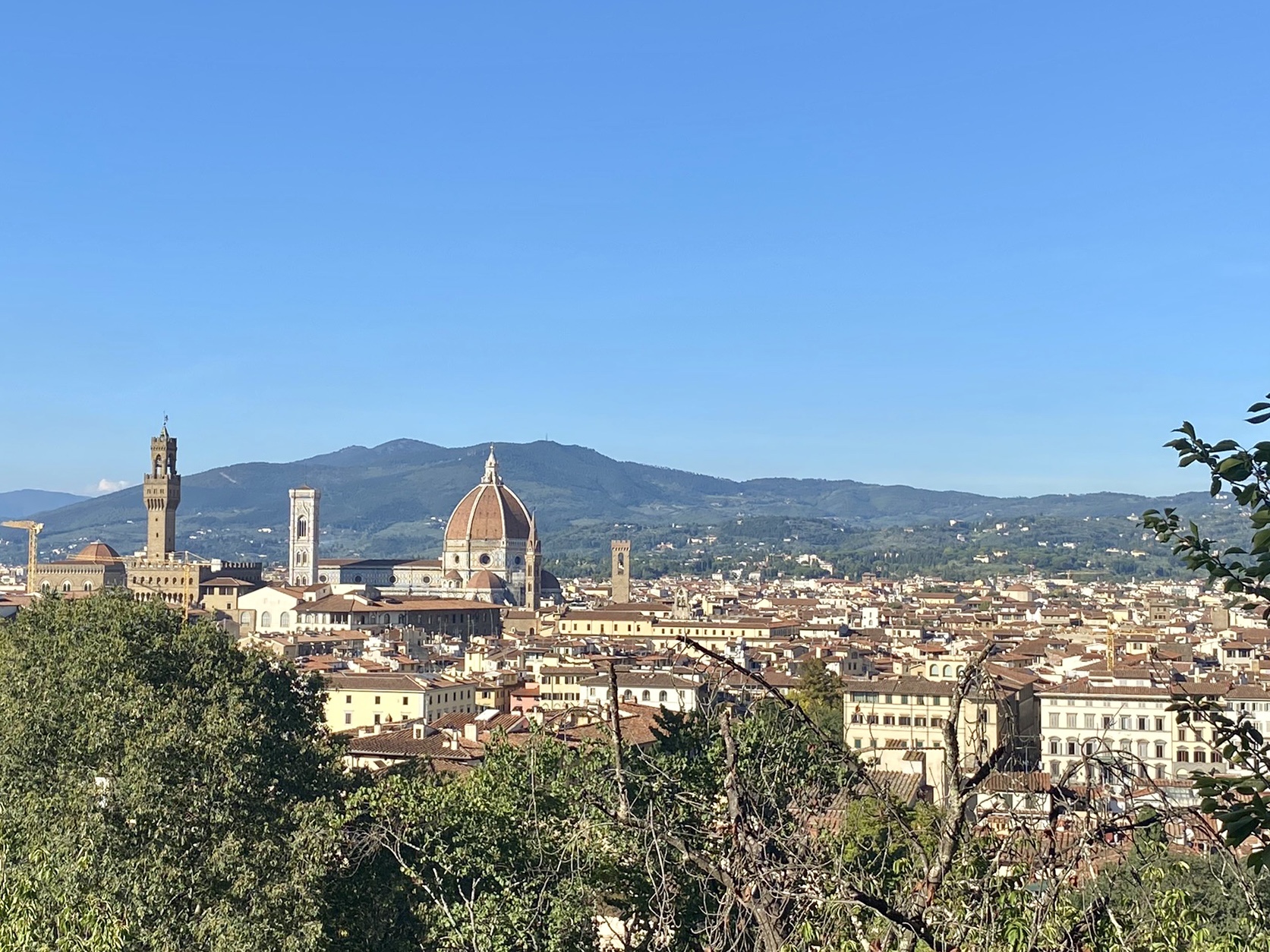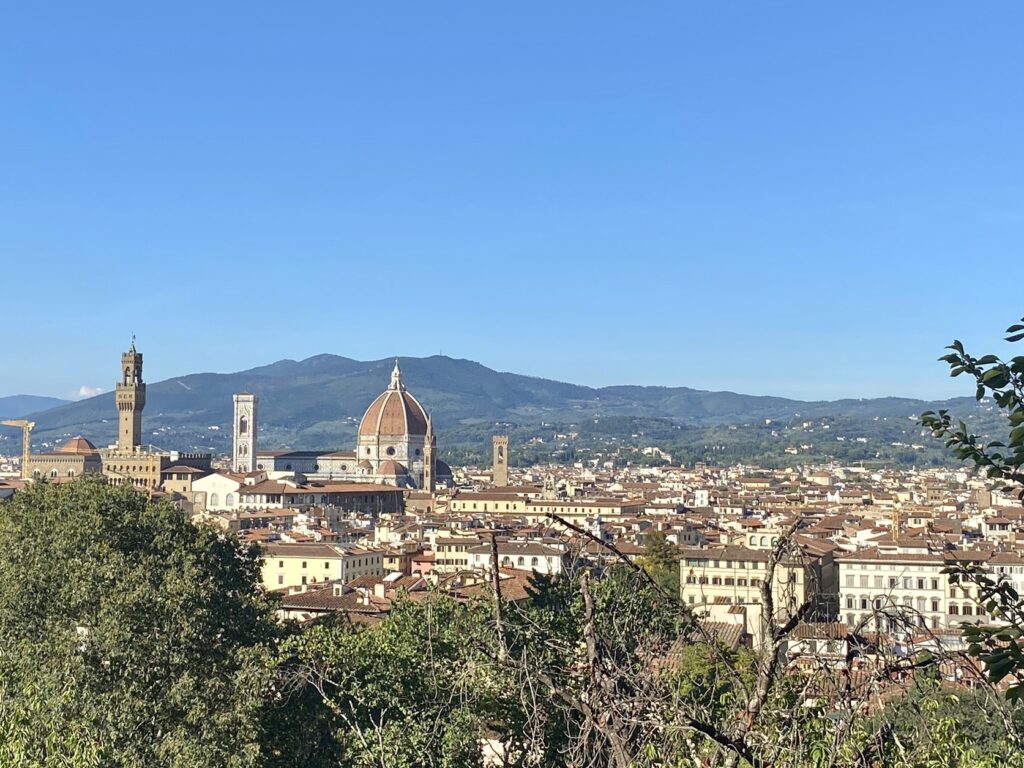
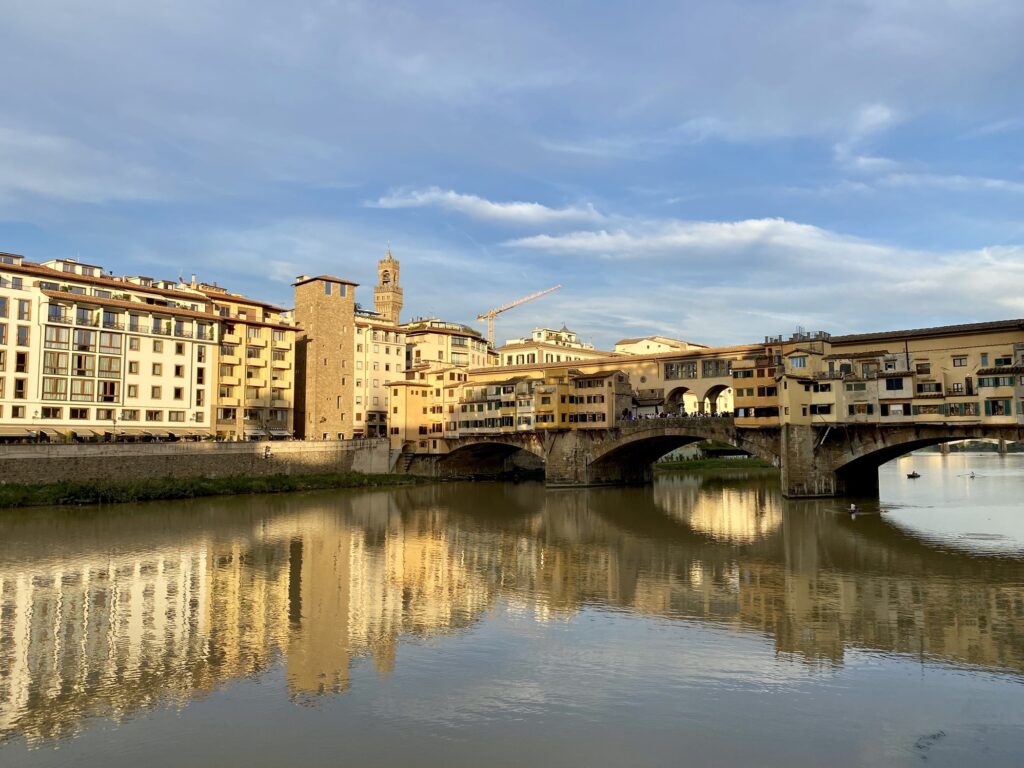
As a friend recently said, if you travel to a lot of places they can’t all be your favorite. Our time in Florence has had peaks and valleys and ultimately will not make it to our list of favorites.
(If you want to know our favorites so far, read our six month recap!)
We booked 3.5 weeks in a rental apartment in the northern suburbs of Florence, but we ended up leaving a week early and heading northeast to the Veneto.
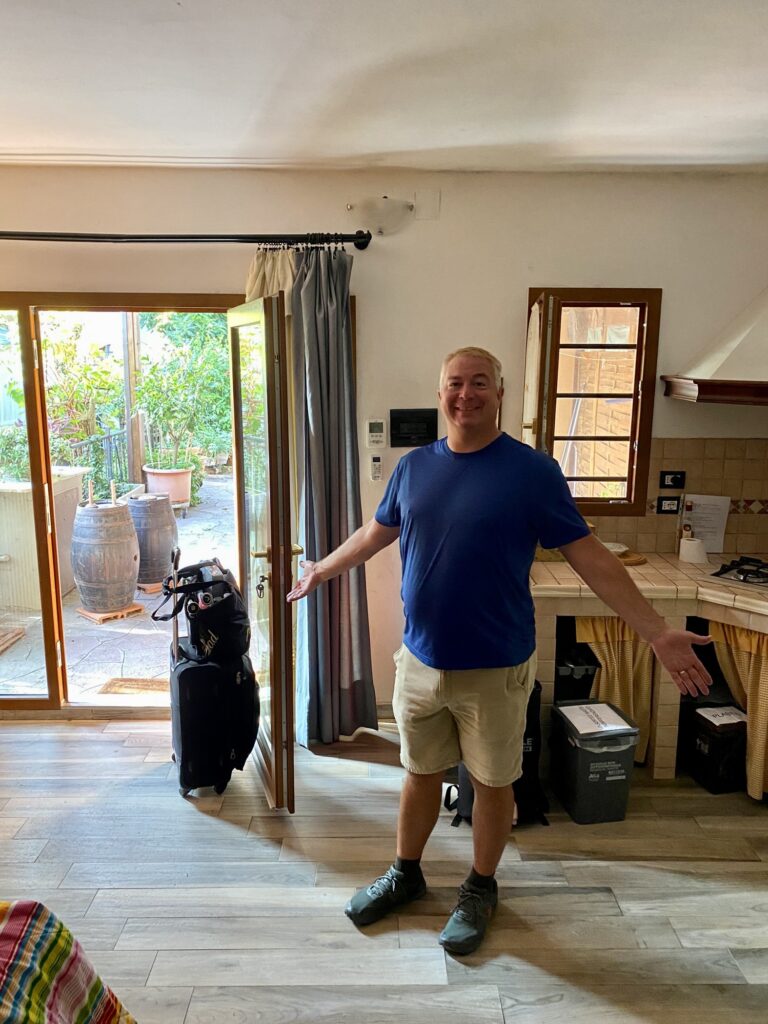
The AirBNB was cute but it’s not a good space for two. We’ve happily stayed in cruise ship rooms half the size (and booked more for the future), but those rooms have better storage situations, and lots of other places to hang out. The WiFi was very inconsistent which delayed travel posts and caused us to struggle to make future plans (and watch Mariners playoffs). Tuscany had been raining and it felt like the entire apartment was dank. On the plus side, Corey figured out how to make coffee using a moka pot, and we cooked a number of fresh pasta dishes. Fresh pasta from the grocery store was under $2 a package so cooking at home helped us reduce food expenses.
We thought that by being out of the Florence tourist zone we would be able to experience the real Italy: cheaper prices, better food, authentic experiences. Well we did, but it was not like we had expected.
Florence Public Transit (Autolinee Toscane)
Campi Bisenzio is a small town eight miles from Florence proper, and on paper it should be about an hour to Florence on public transportation.
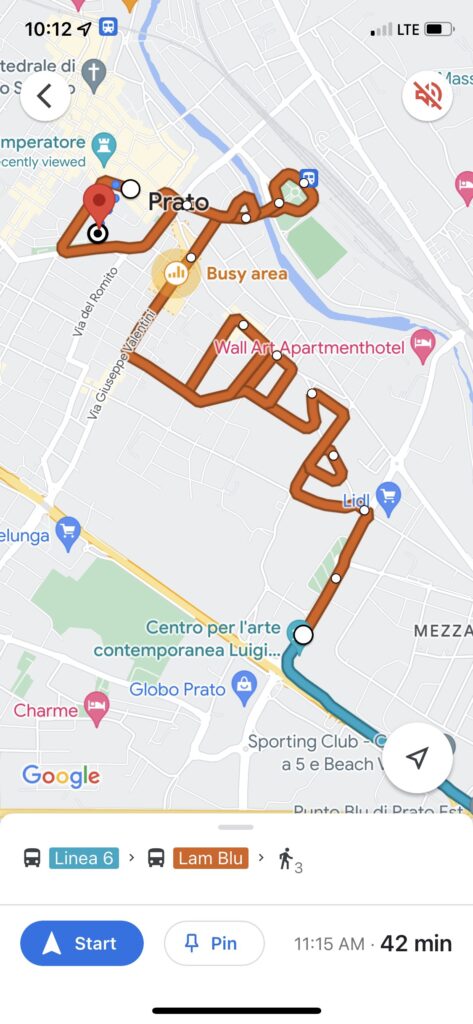
Almost every day, we took a bus into Florence, and almost every day we were met with various transit challenges. Scheduled buses would just “ghost” our stop, or make strange detours. What should have been an hour almost always became two hours including the walk to the bus stop. It made for difficult planning, and made it nearly impossible to get early starts at museums.
Read our detailed how-to for mass transit in Florence!
With transit venting out of the way, here is what we enjoyed.
The Artistry of Florence

We bought a five-day Uffizi pass that included the famed Uffizi, Boboli Gardens, Bardini Gardens, Pitti Palace, National Archeological Museum, and the Opificio Delle Pierre Dure workshop.
Uffizi
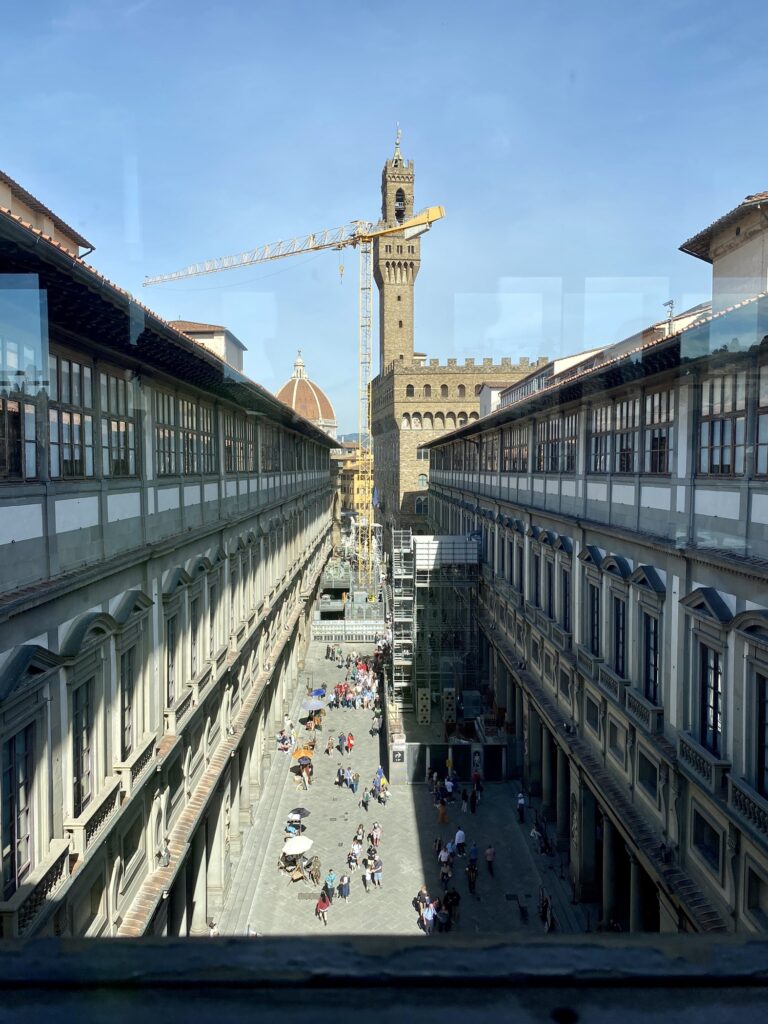
The Uffizi was built by the Medici family in the 1500s and is one of the most-visited museums in the world. The collection of art is astounding! We walked through the halls of Uffizi like art historian pros. Just kidding! We did wander through the halls with gaping mouths and pointing in all directions at the ceiling, statues, portraits, and views. The building is full of art and there is something to look at from every angle.
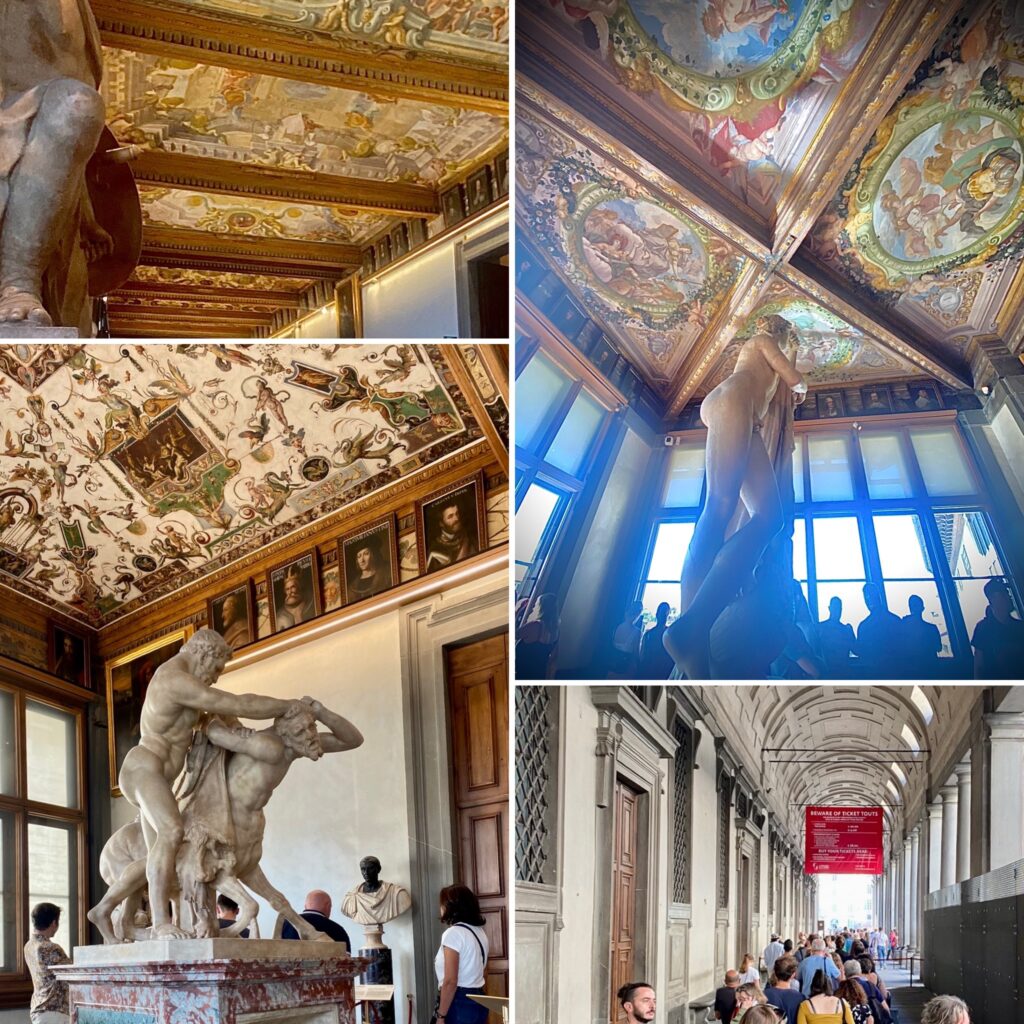
We both loved the architecture of the various salons, and the opportunity to view so many remarkable works by the most renowned painters of the Italian Renaissance.
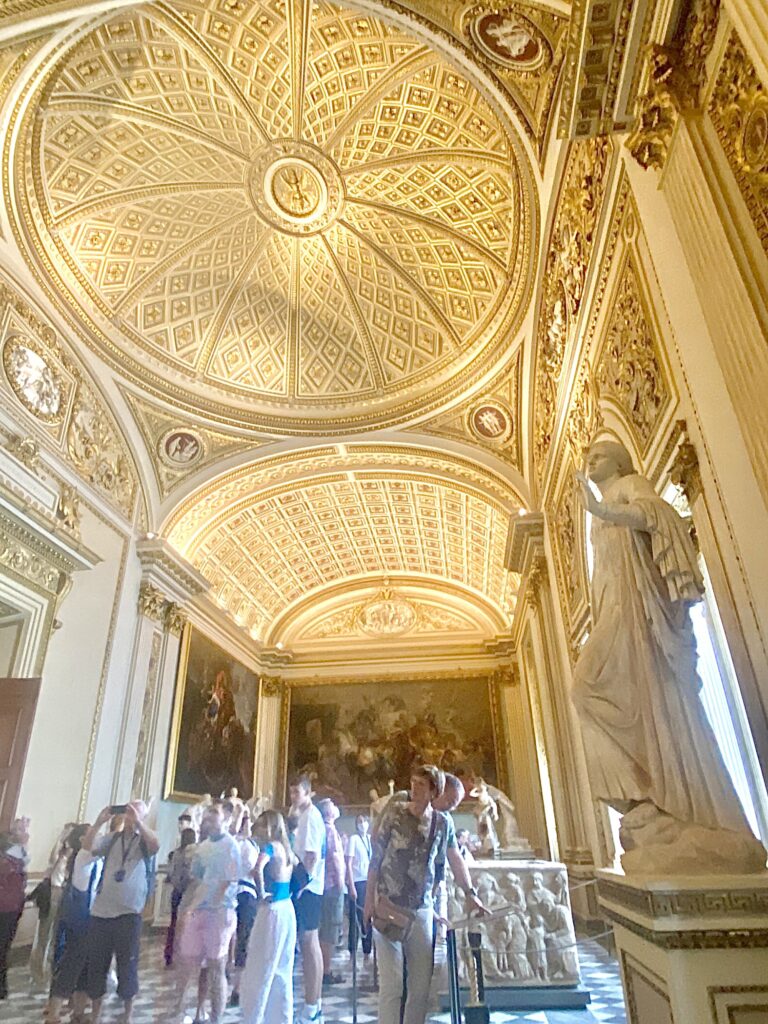
The cafe terrace offers outstanding views of the rooftops of Florence, and we enjoyed prosecco and potato chips, then headed down to the lower floor to view more works of art.
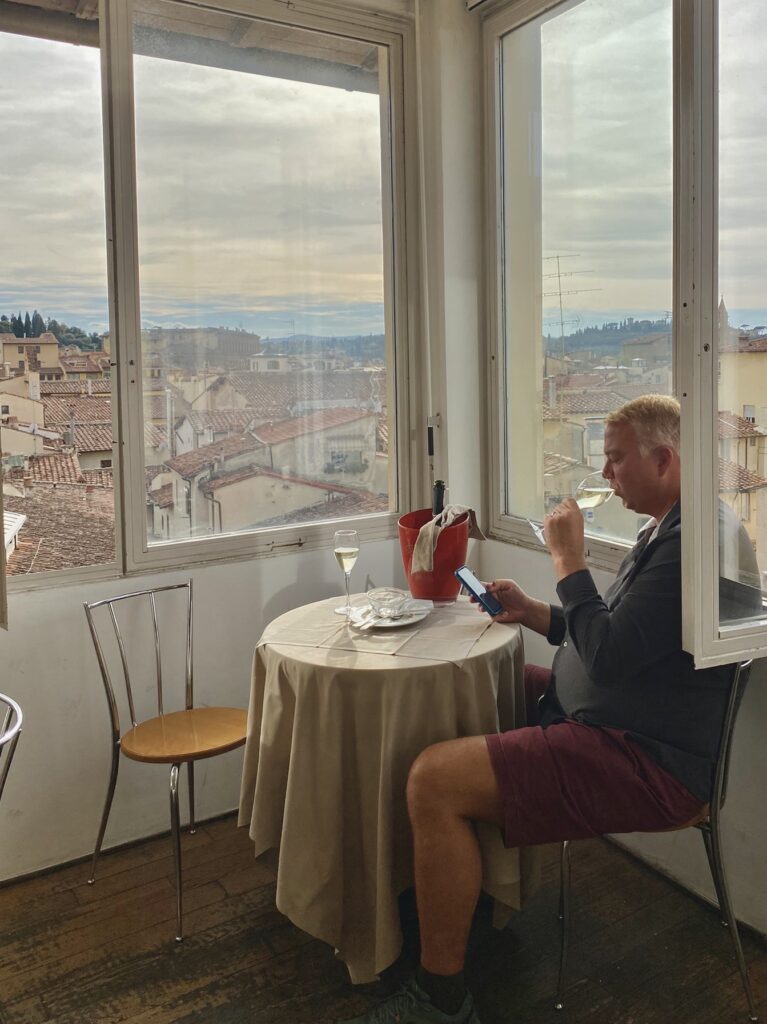
In total we strolled through the 50 rooms and the hallways for about six hours, walking over three miles just inside the museum!
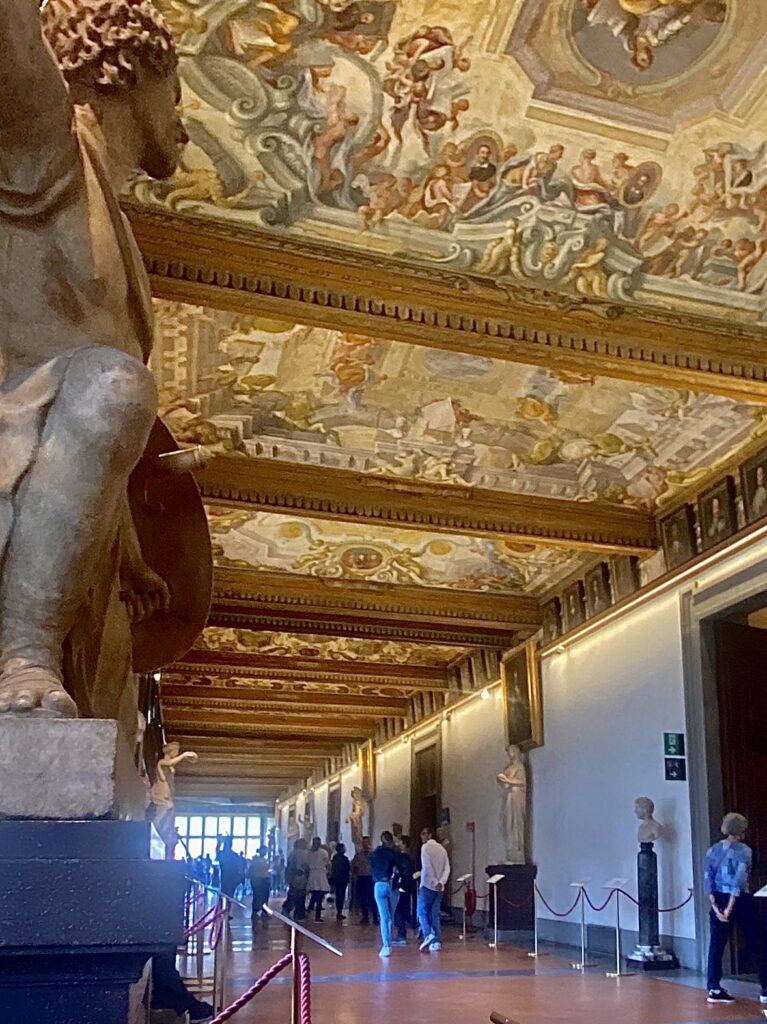
Palazzo Pitti (Pitti Palace)
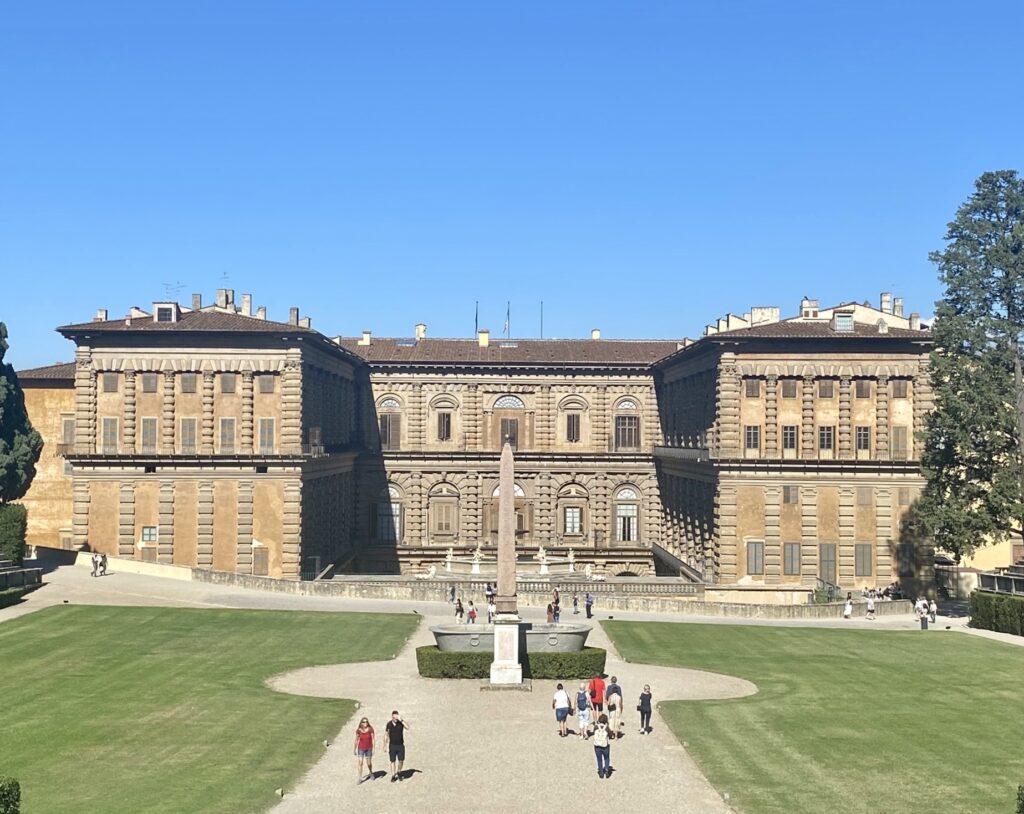
Just across the Arno River is a large palace that was occupied and renovated by the Medici family. The Pitti currently has five museum galleries, and we visited the Palatine Gallery (the main collection), the Ducal Treasures, and the Gallery of Modern Art. The Costume Museum was closed. The Royal Apartments, part of the main collection, were closed for renovations. We skipped the Russian Icons museum as we had seen many Orthodox icons from our time in Bulgaria, and were simply out of time!
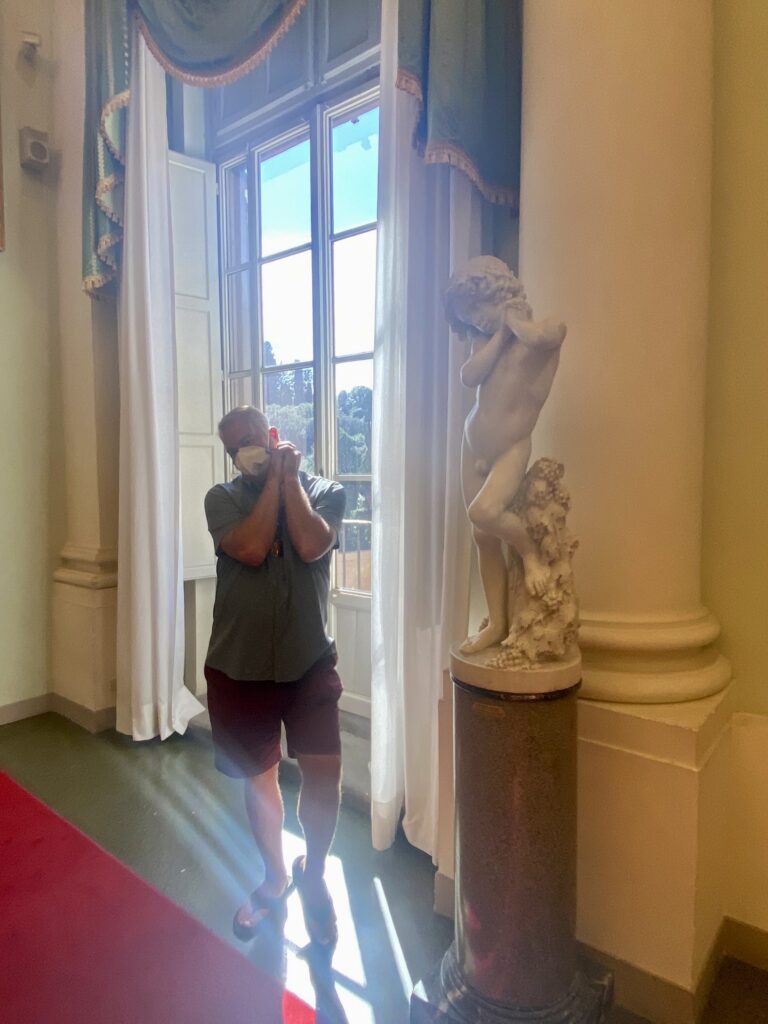
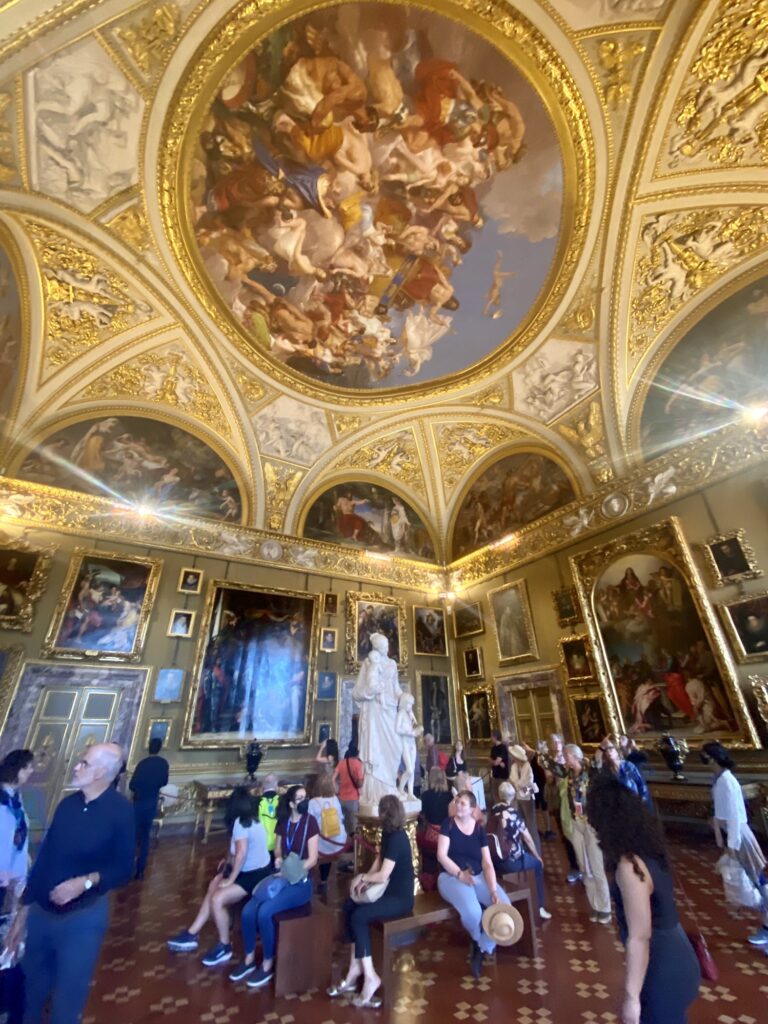
There were many rooms adorned with a lot of paintings and at times the quantity of works became overwhelming.
The Gardens
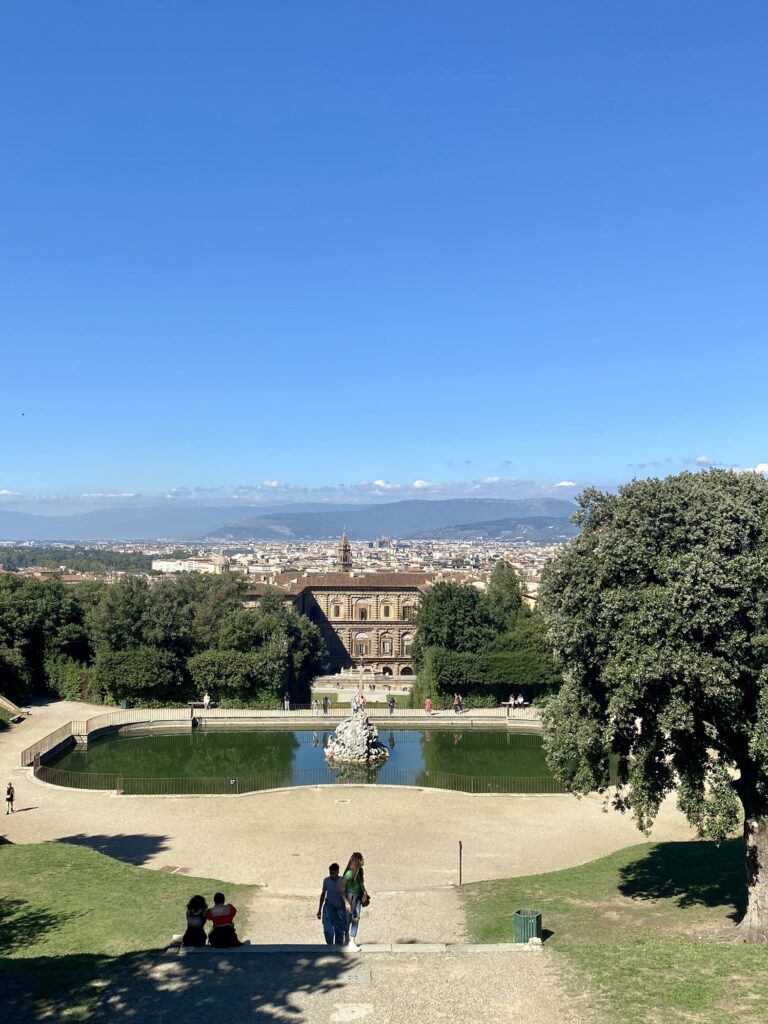
Just steps from the palace you can enter Boboli Gardens, which is the garden area for the Pitti Palace. It is a huge area with nice views and various fountains and statuary. Most of the valuable statues were long-ago removed from the garden for preservation, and can be found in other Florence museums. What is left are copies or lesser works. Overall we found ourselves underwhelmed by Boboli after visiting so many lusher and well-kept gardens across Europe.
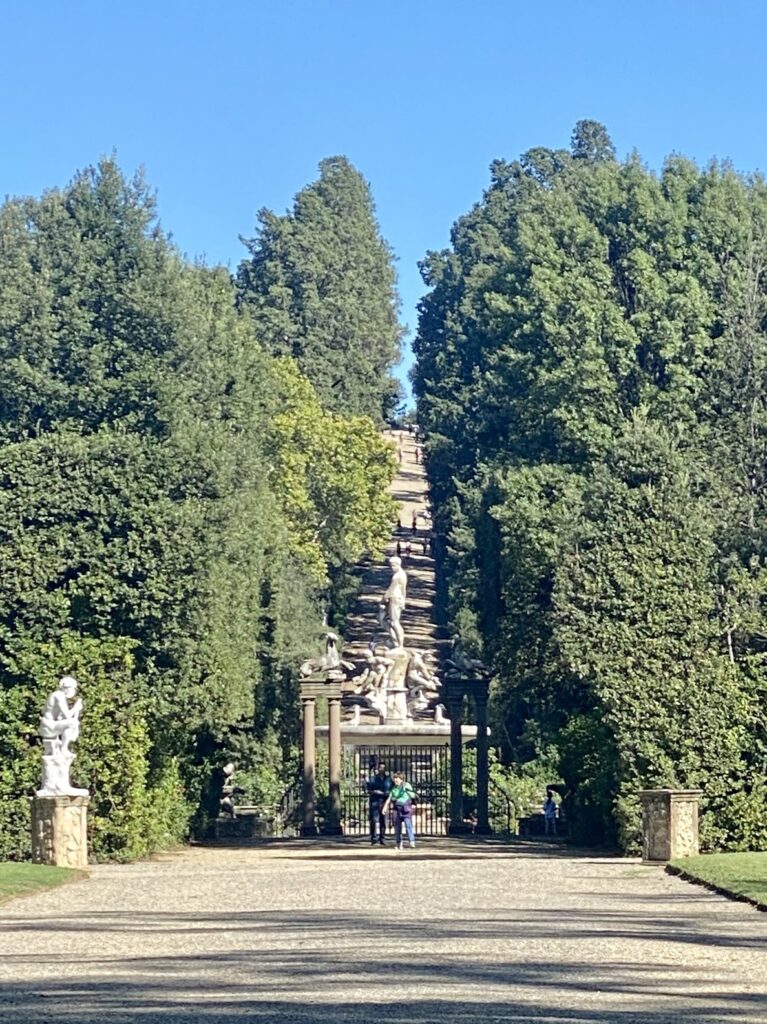
We had a picnic and walked around and enjoyed the sunshine though.
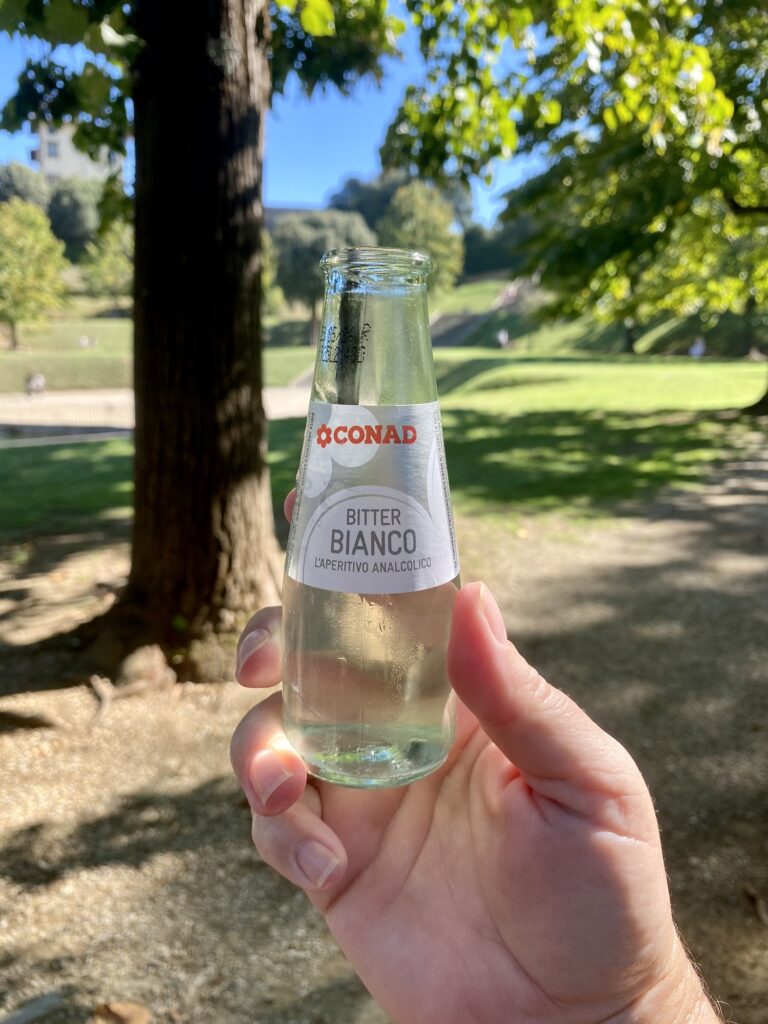
We loved our visit to the nearby Garden of Villa Bardini, aka Bardini Garden. It is a fraction of the size of Boboli but with better vistas over the city, nice places to sit and relax, and beautiful landscaped areas. It is the walled garden area associated with the large home of Villa Bardini, and if you entered from the city side (at the bottom of the hill), you would have no idea what awaits you in the “backyard” of this ancient walled home.
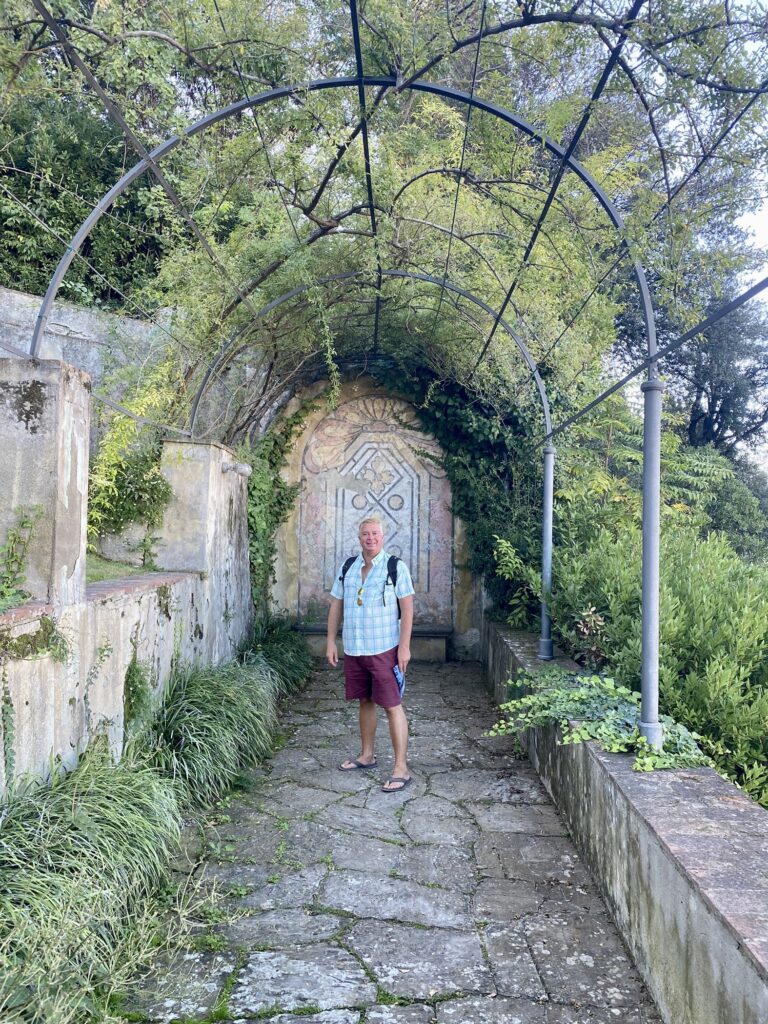
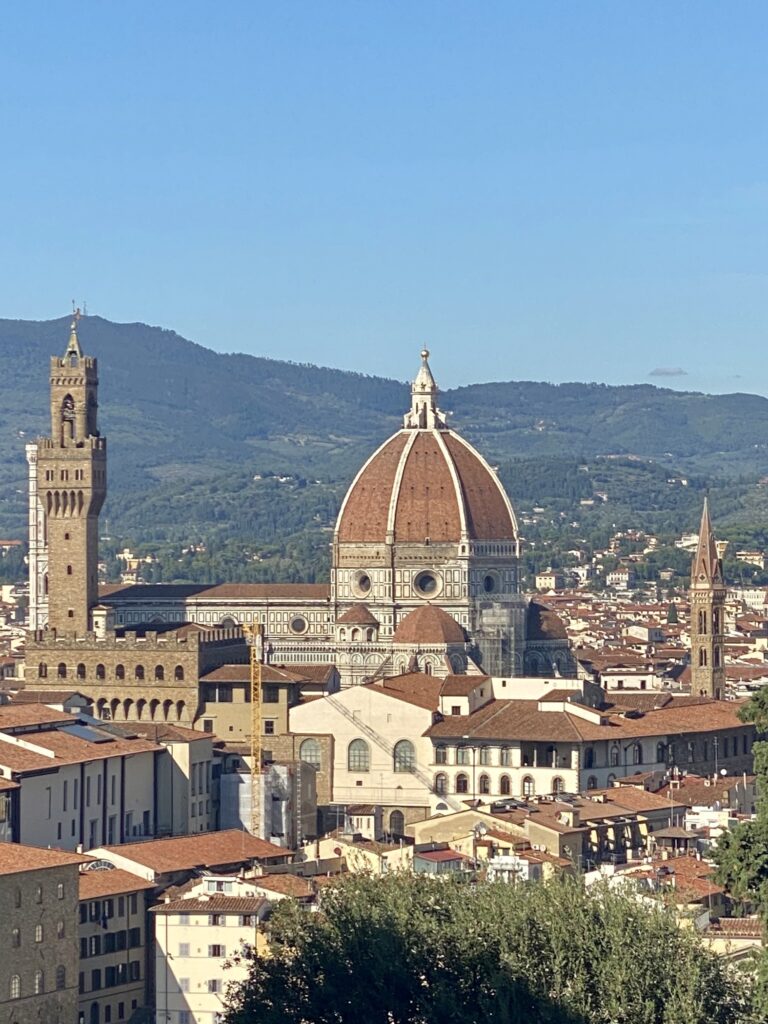
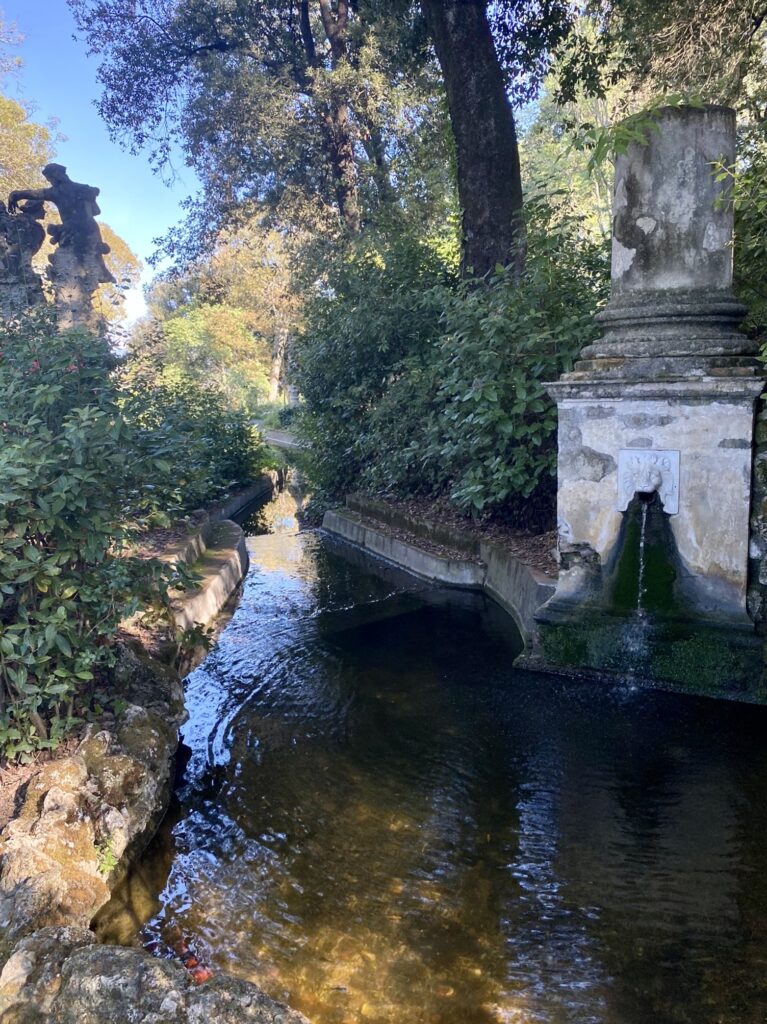
Archeological Museum
We missed our chance to go to the archeological museum because the hours online were confusing and Google’s listed hours were incorrect. Even with five days to visit all of these sites, it is difficult to map out a path that includes everything!
Opificio Delle Pietre Dure (Workshop of Semi-Precious Stones)

The littlest museum/workshop was a real highlight for us. We learned all about Pietre Dure, the art of creating art out of inset rocks. As a rock enthusiast, I loved seeing all the stones artists used over time to create such amazing works of art! There was also a short video describing the process which gave us both a new understanding of this amazing artistry.
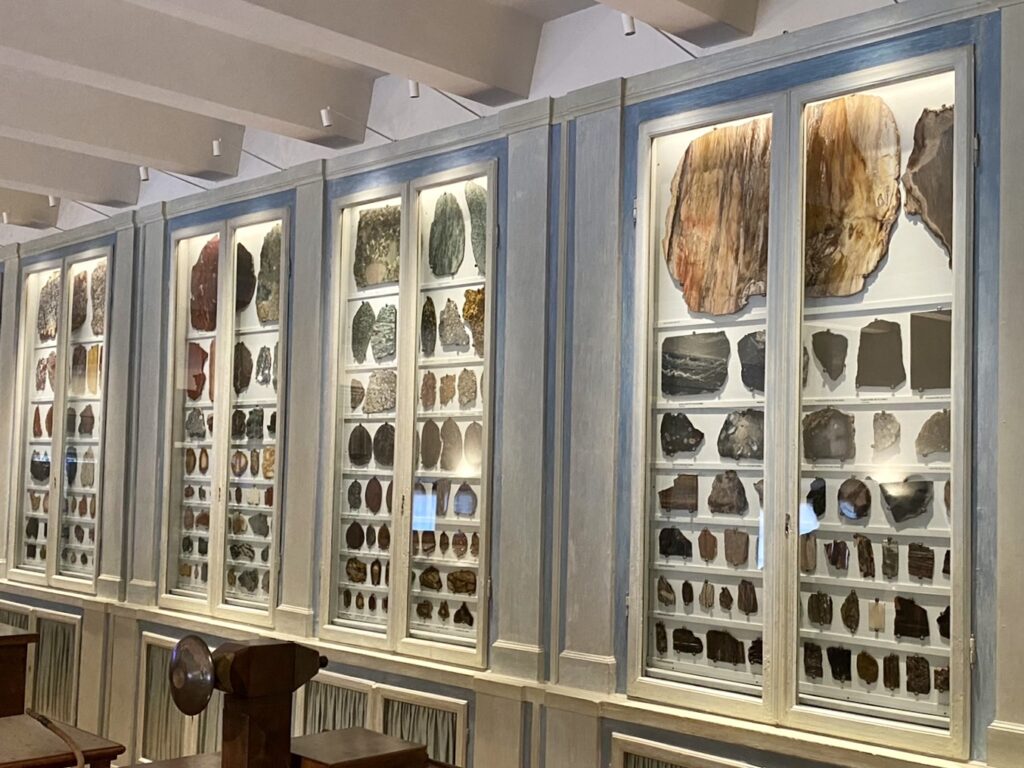
Museum free days
State museums in Florence are free on the first Sunday of each month. We took advantage of two: the Bargello (Museo Nazionale del Bargello) and the Academy (Galleria dell’Accademia).
We had originally planned to get in line early for the Uffizi but our plans were thwarted by public transportation. We arrived too late in the city and the line to get in after opening was several blocks long. Fortunately we had backup museums in mind, so headed straight to the Bargello, which had no line!
The Bargello has statues… so many statues! Full-size, busts, door sculptures, by masters like Michelangelo and Donatello. There are other collections, but it is dominated by a comprehensive collection of sculpture from the 14th-17th Centuries.
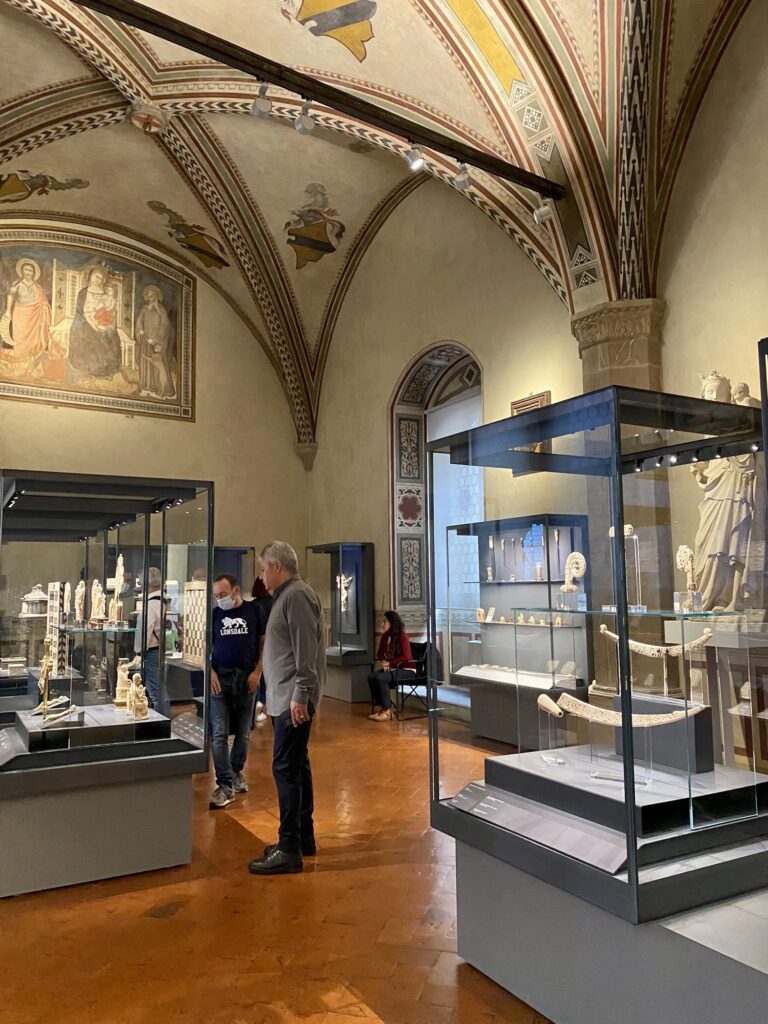
After admiring the careful works, including the David by Donatello, we dined outdoors (which is all’aperto in Italian, not al fresco), then headed to the Academy.
The line looked a little scary but moved in quickly. Most people come to see Michelangelo’s David and then leave, allowing for quick entrance. (Contrast with the Uffizi, which guides patrons through the entire facility and has many, many “highlight” pieces of art. Since people spend hours inside, the line is much slower!)
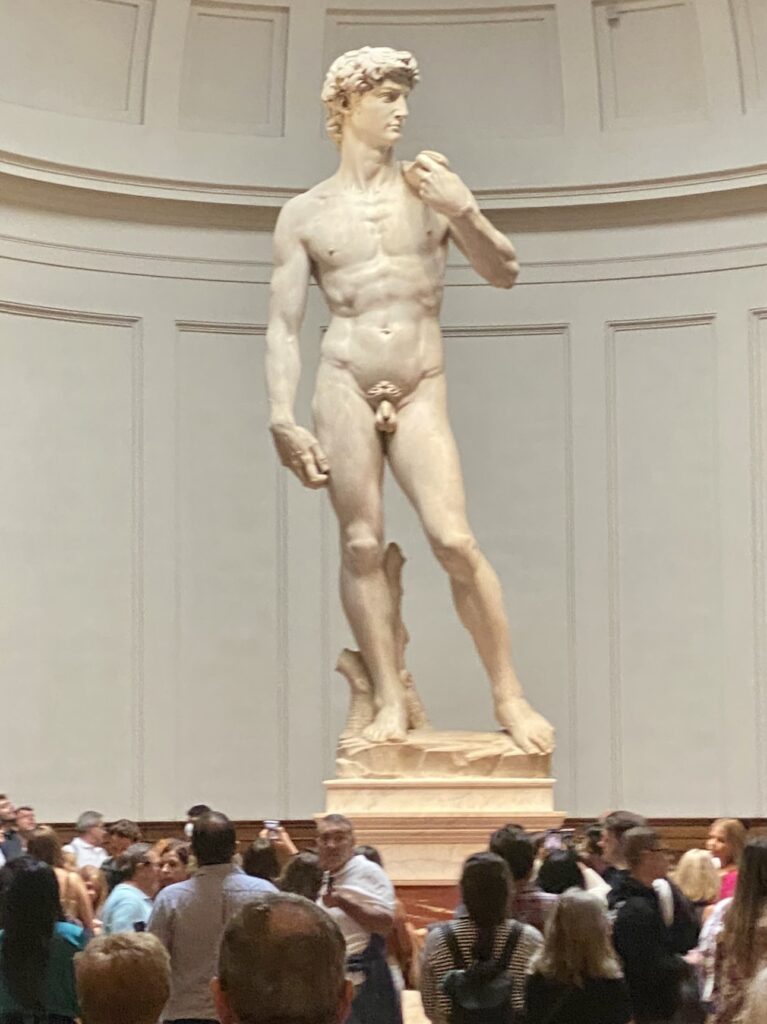
Academy Gallery is impressive with large paintings, unfinished Michelangelo sculptures, and of course, the impressive David. While best known for a single sculpture, the museum itself is mostly dedicated to display and analysis of the paintings. The displays do an outstanding job at presenting the context of the painting in history, as well as the various components of the work.
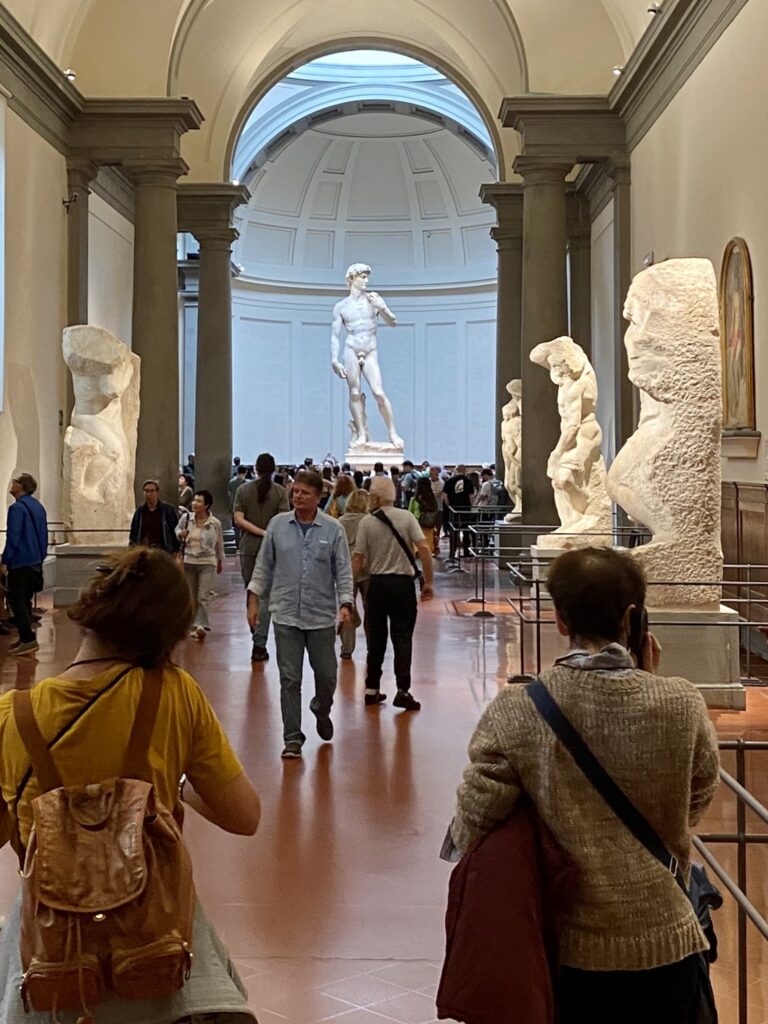
Cathedral Complex (The Duomo)
The first time you walk into the piazza near the cathedral, you can’t help but to stop in your tracks and gawk at the impressive church complex.
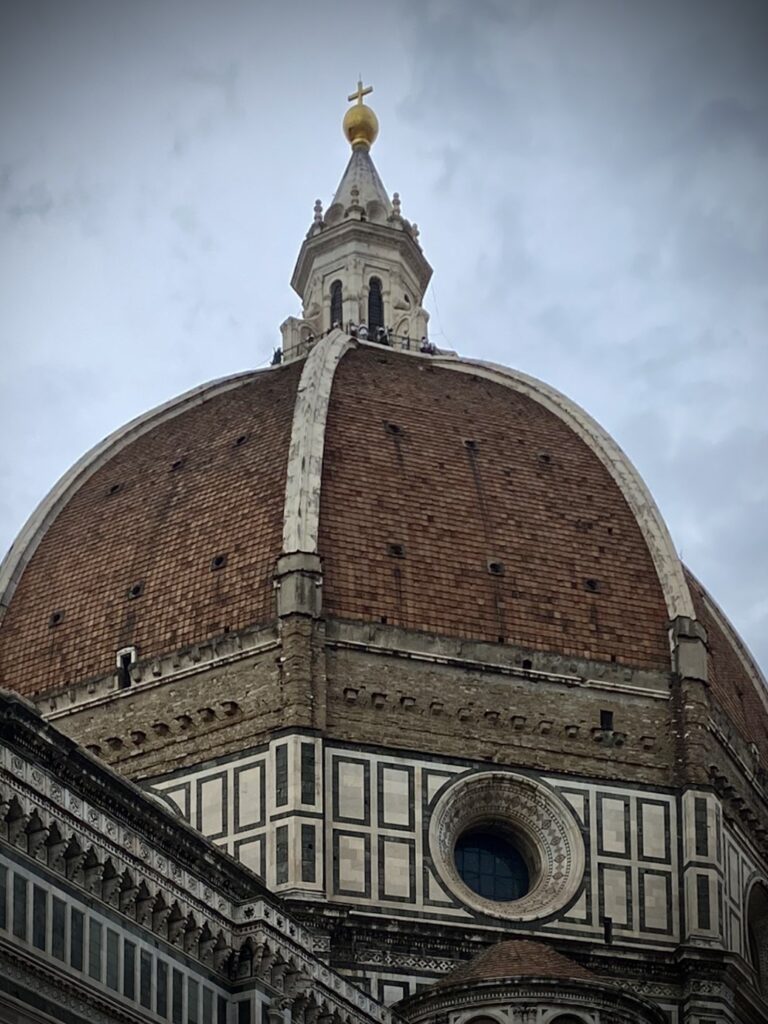
We learned that “duomo” means cathedral in Italian, not dome! Yay us! We aren’t domies anymore. Okay, no more lame jokes.
The English word “dome” comes from “duomo,” via French, but in Italian, any cathedral is a duomo, but not all duomos have cupolas. And not many cathedrals have the iconic cupola of Florence’s most iconic building, the Florence Cathedral (or Cattedrale di Santa Maria del Fiore).
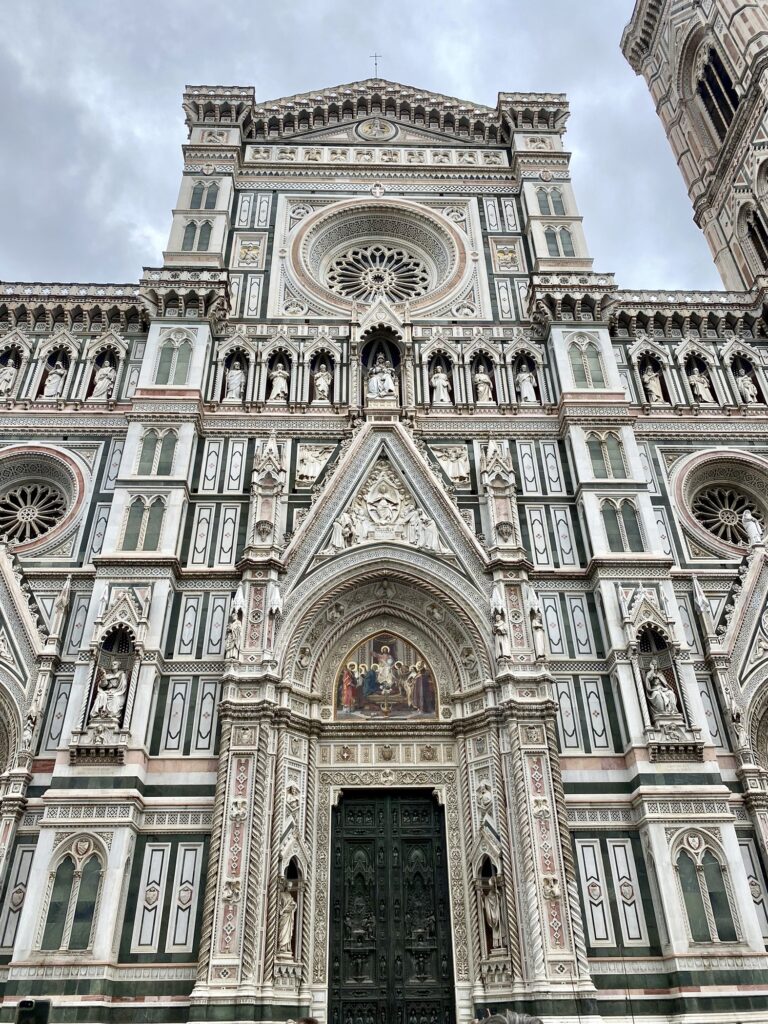
The sanctuary of the cathedral is free to the public, and there are often long lines to get in.
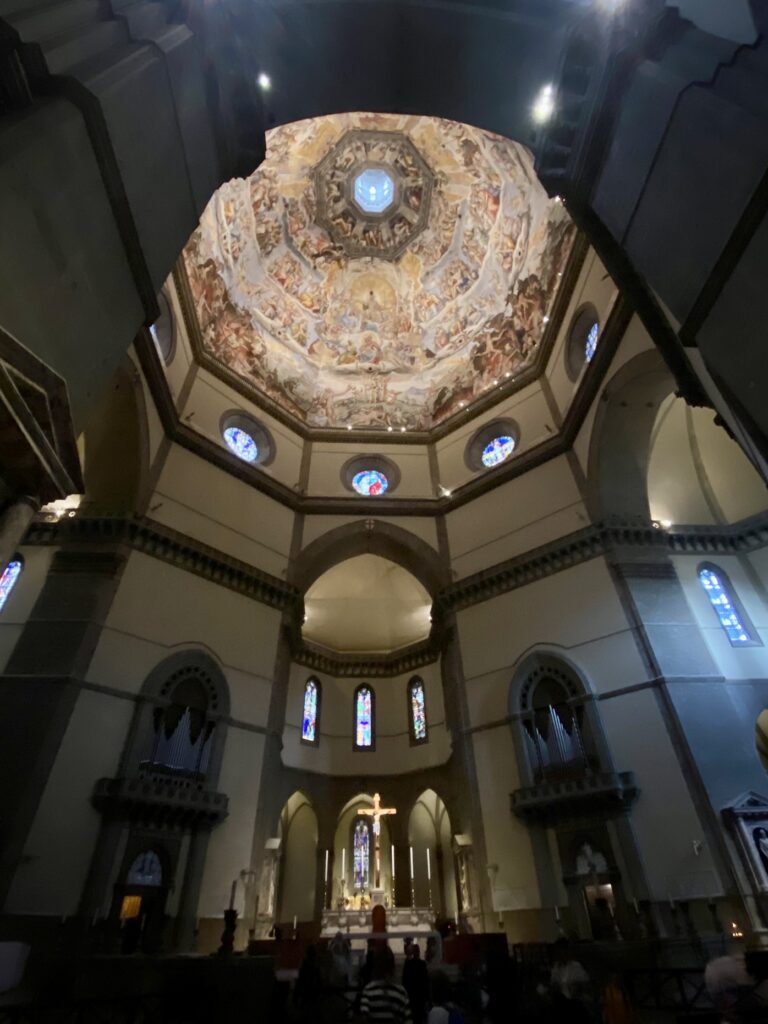
Three-day passes are sold for access to the cathedral’s museum (Museo dell’Opera del Duomo), the Santa Reparata church (located below the cathedral), and the Baptistery. Additional charges allow for climbing the Bell Tower and the Duomo’s cupola itself (aka The Brunelleschi Dome).
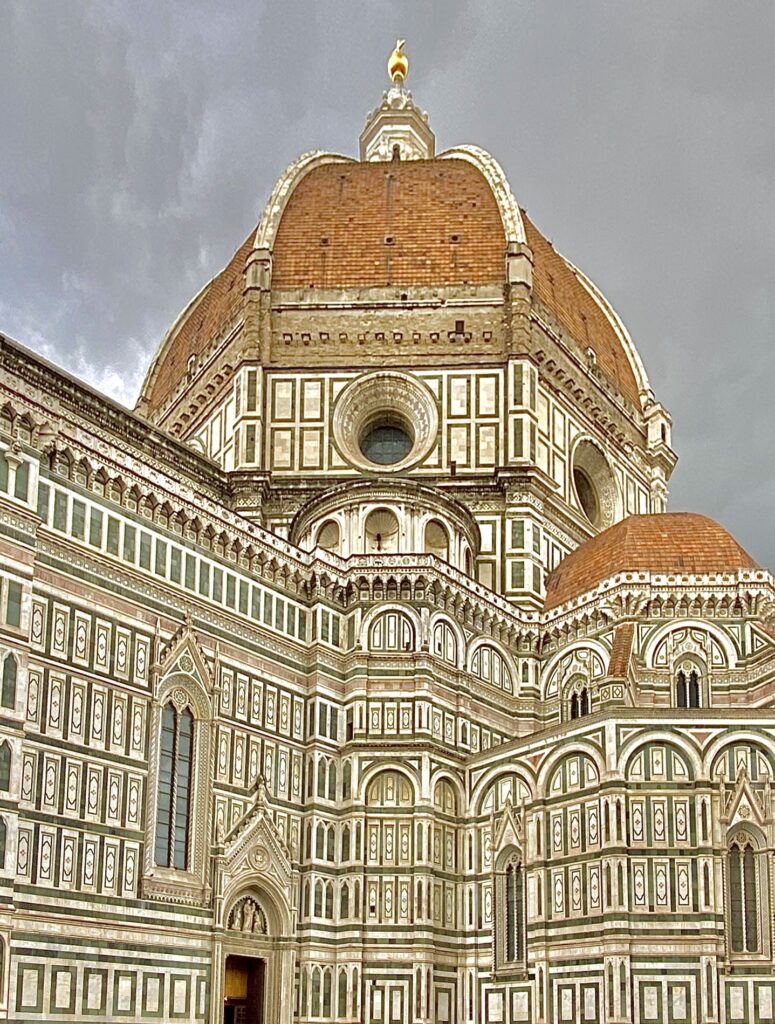
We waited to complete this since both climbs involve hundreds of steps. I was hoping my sprained ankle would have healed enough to be able to handle the stairs, but unfortunately, Corey climbed while I rested with a spritz for good company.
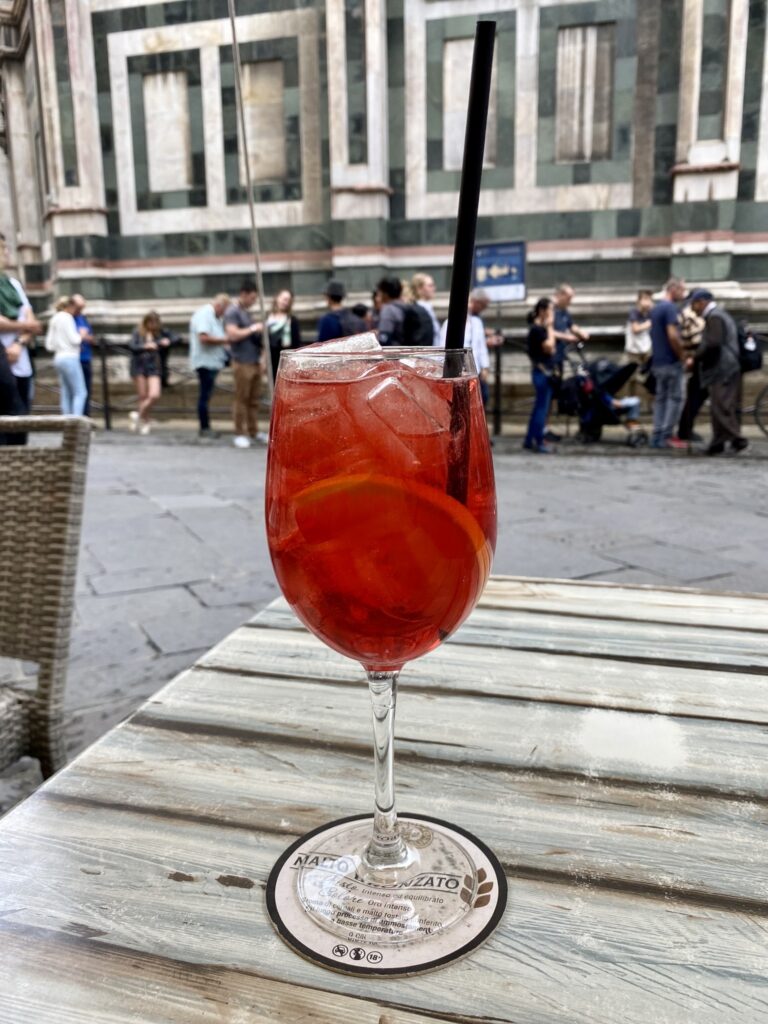
The Dome climb requires an advance timeslot, and is well worth the climb.
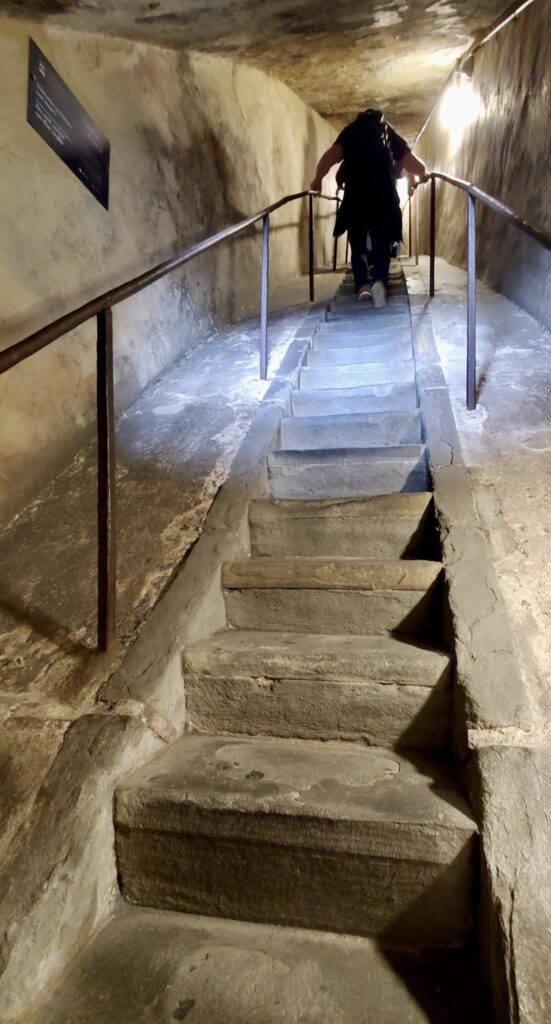
The views of the surrounding city are outstanding, as is the close-up view of the inner ceiling of the cupola.
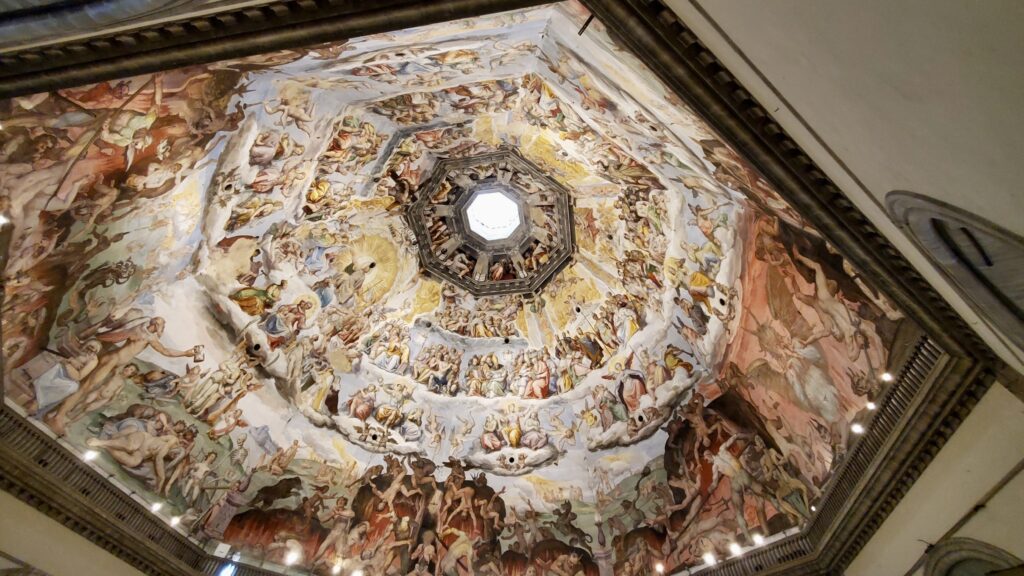
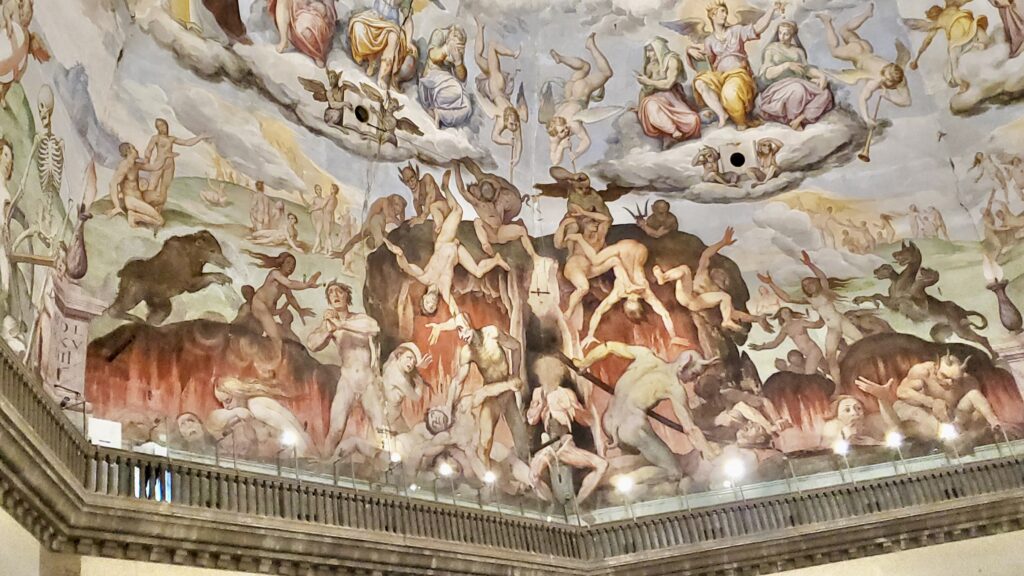
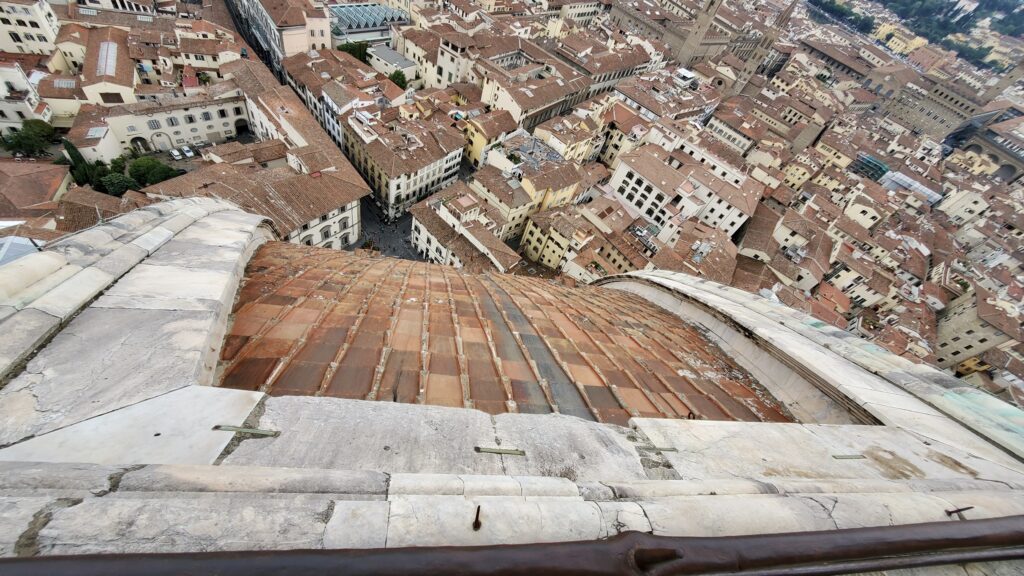
The bell tower was less-impressive: shorter, with views blocked by fencing, and narrow two-way stairwells. It does supply views of the Duomo itself, but otherwise the Duomo is the better climb.
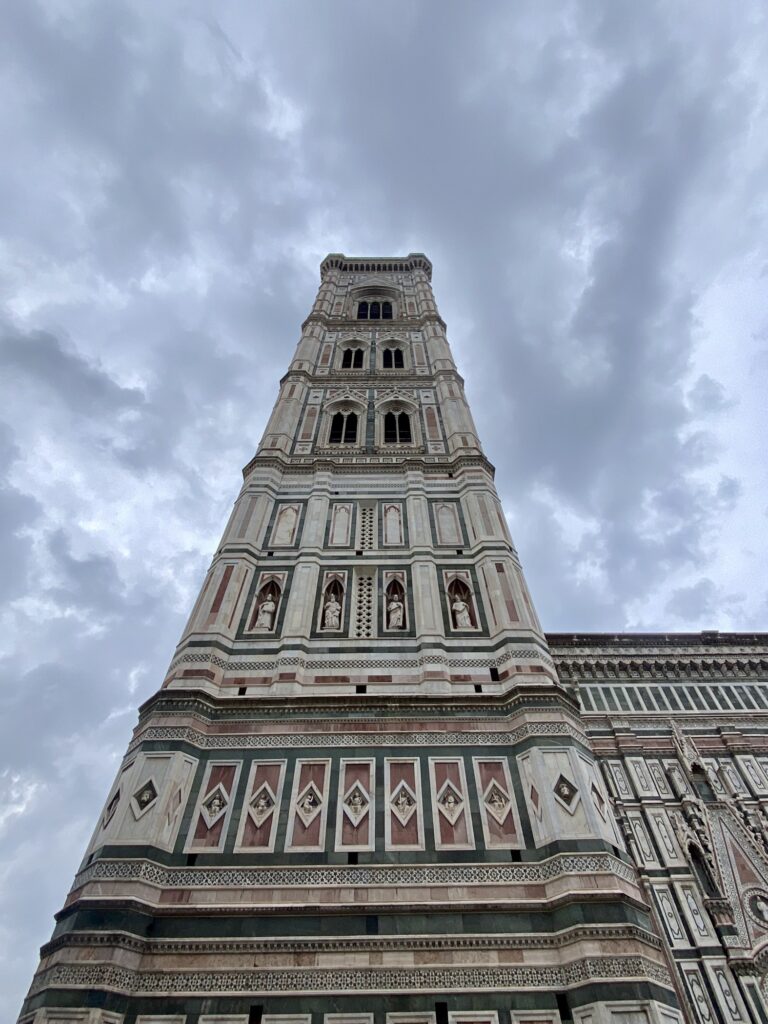
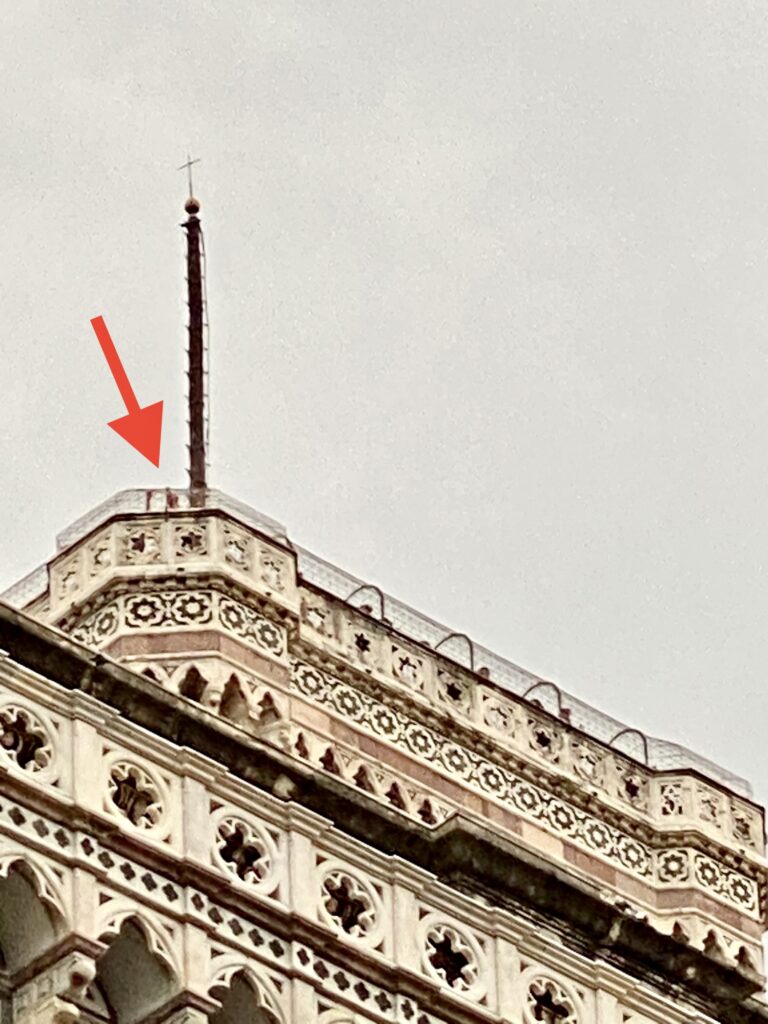
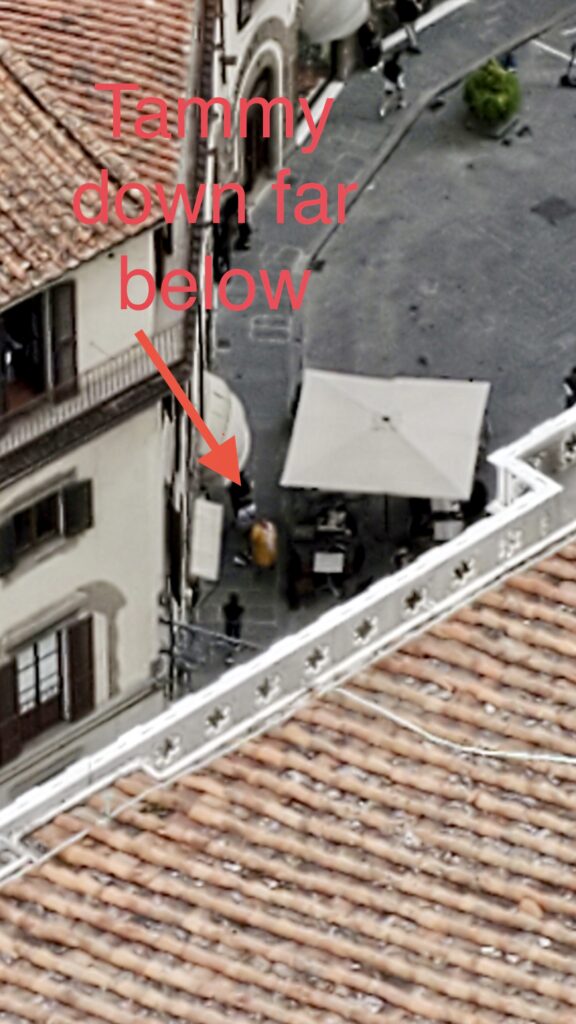
On our way into Santa Reparata, we were able to detour and view the inside of the Cathedral without waiting in that long separate line. Santa Reparata has a separate entrance from the exterior of the building, but before going down the stairs, you are inside the Cathedral itself. After viewing, we just went down the stairs and scanned our tickets for Santa Reparata, which is the ancient church that was there before the newer Cathedral was built on top. There are ruins down there and it was neat but I took no photos.
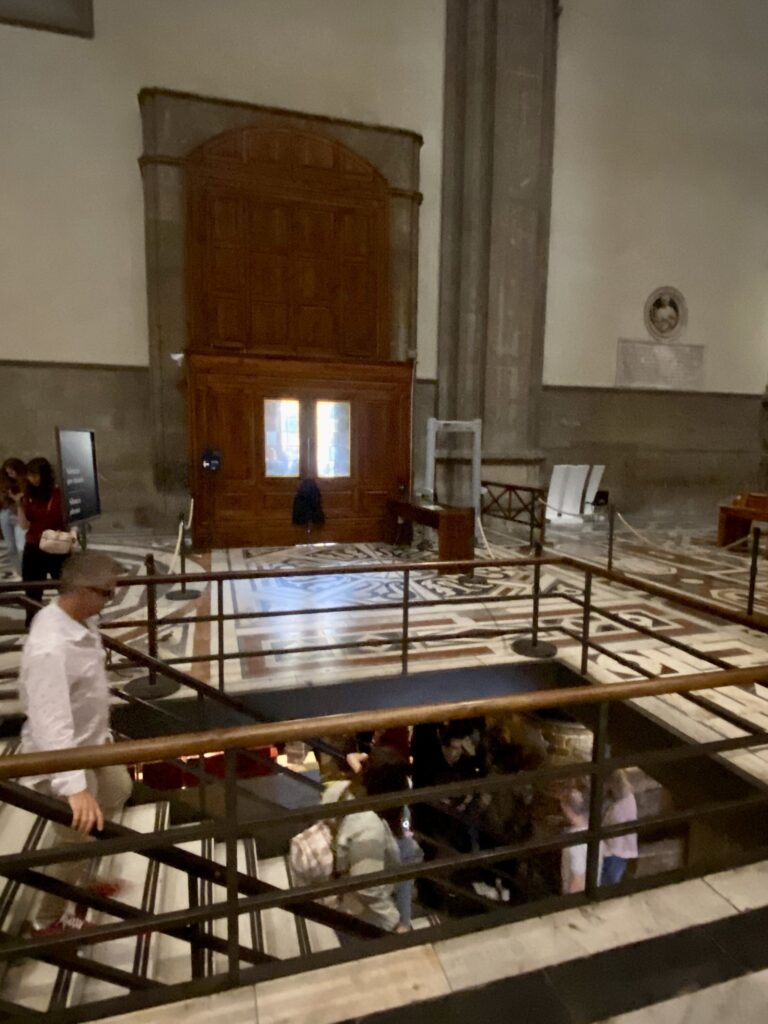
The Baptistery is next door and definitely worth visiting which takes about 30 minutes to explore the elaborate ceiling and the altar works.
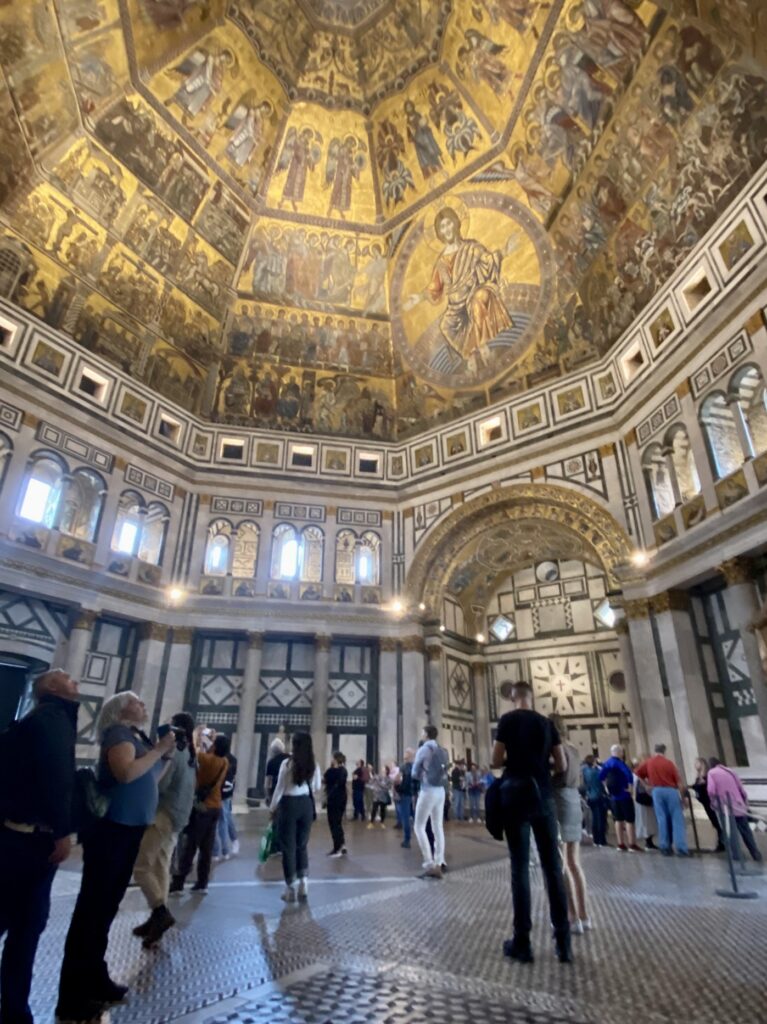
The museum was also quite informative, with much history of the Duomo and its epic facade, including a full scale model of the previous “Gothic” facade.
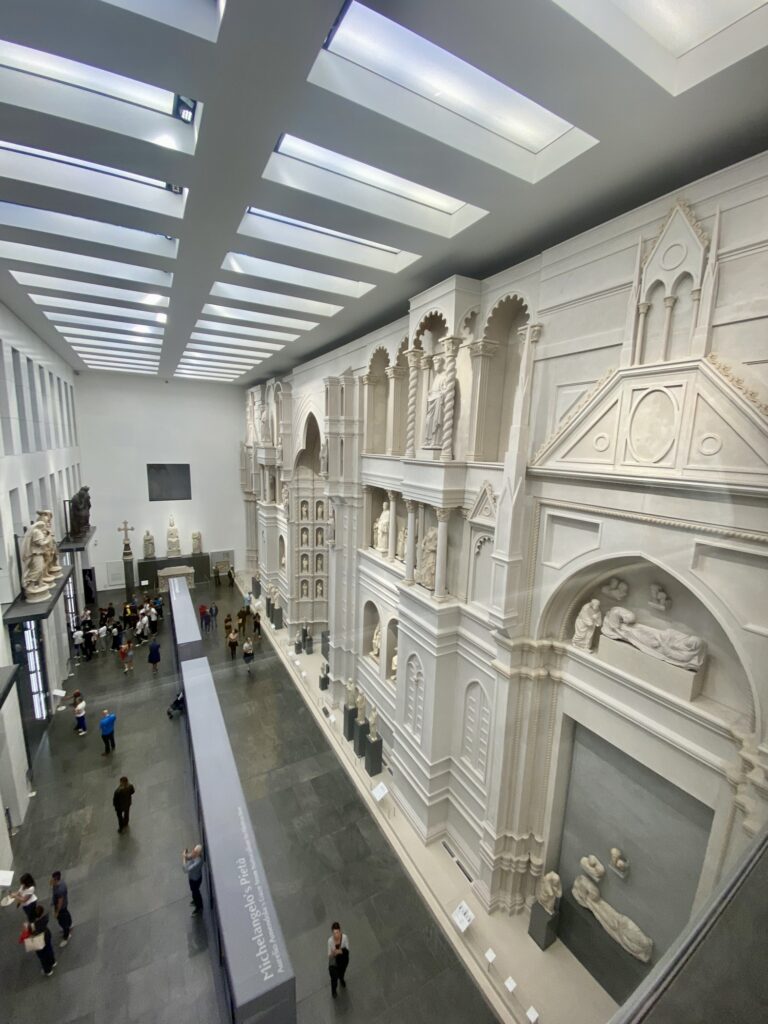
It also includes many of the original sculptures and paintings that were formerly located in the Cathedral itself, and the original doors from the Baptistery.
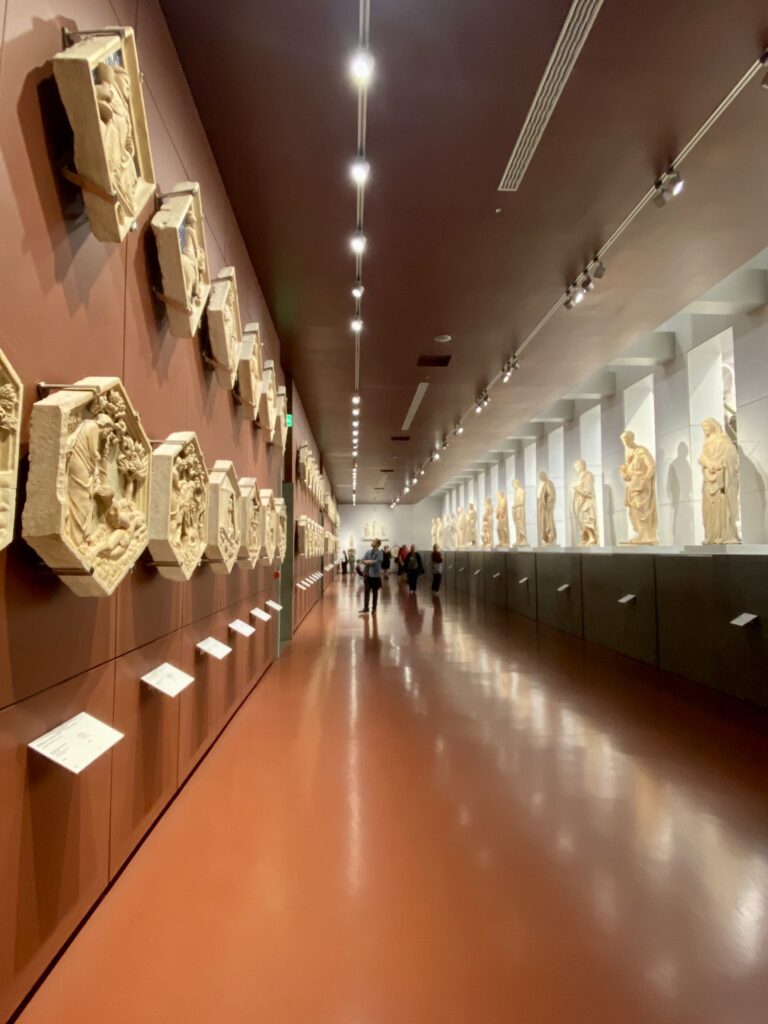
Overall, we were able to cover the whole Duomo complex in a single day, and we found each element of it enriching.
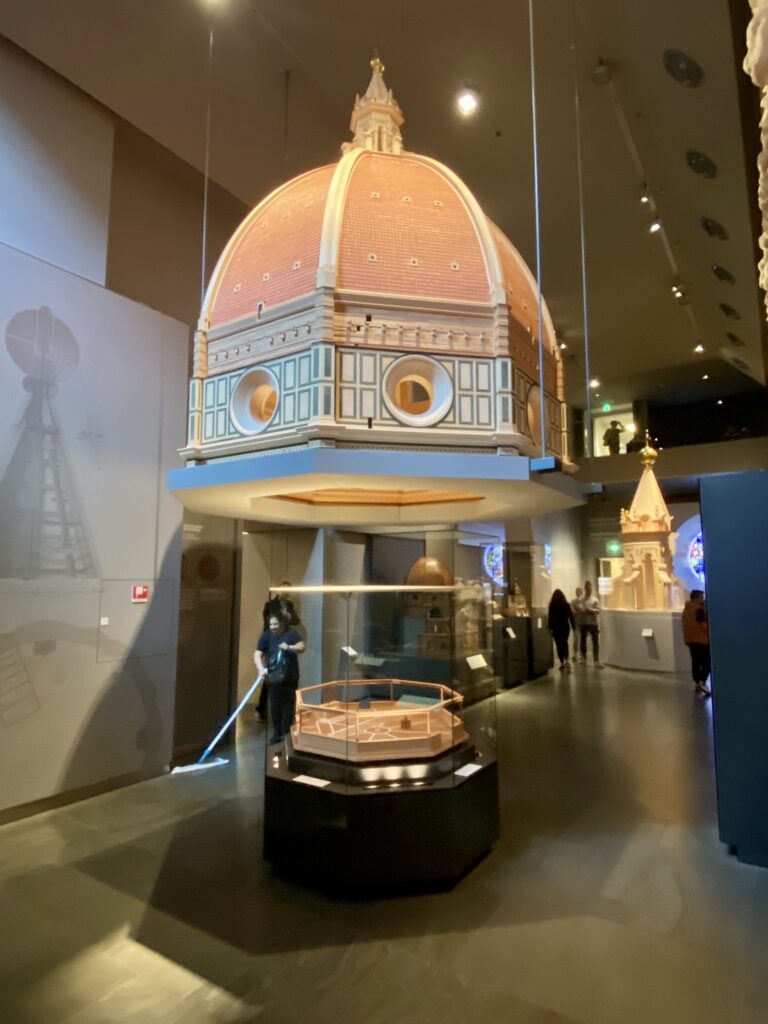
Long walks on the Arno
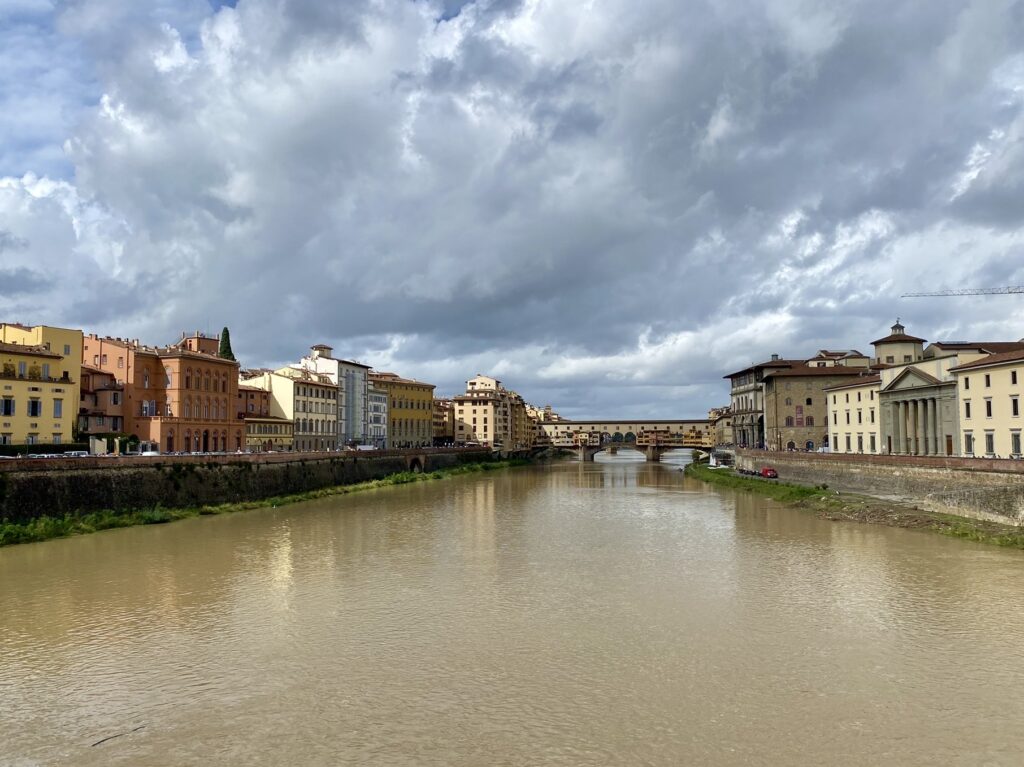
The Arno River flows directly through Florence. With the weather clear and in the 80 degree range, we went far east of the city in search of a beach or pool. Unfortunately, Florence seems to close all summer activities at the end of September. Pools were shut down for the season, and we literally saw some of the pop-up beach facilities being disassembled. Late summer heat is going to be the new normal, and hopefully cities will start adjusting their closure dates!
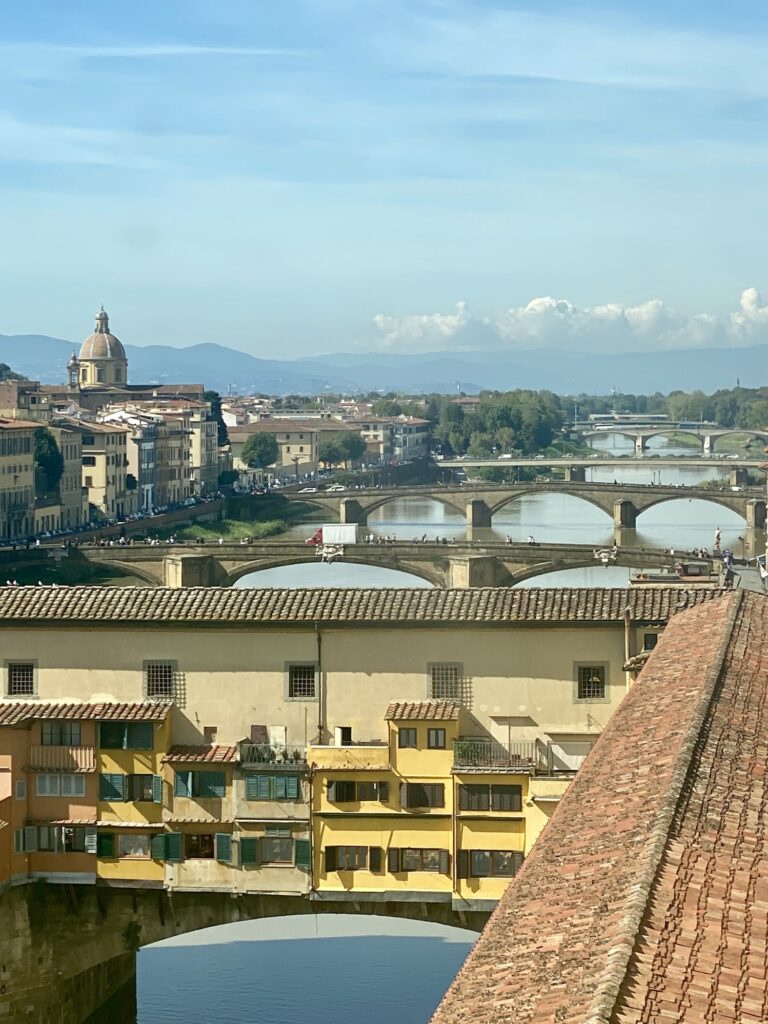
But we enjoyed our nice walk along the river of about three miles, stopping for a spritz at the one outdoor pop-up bar still open, and watching the city get denser and denser until we were walking through the heart of the tourist area.
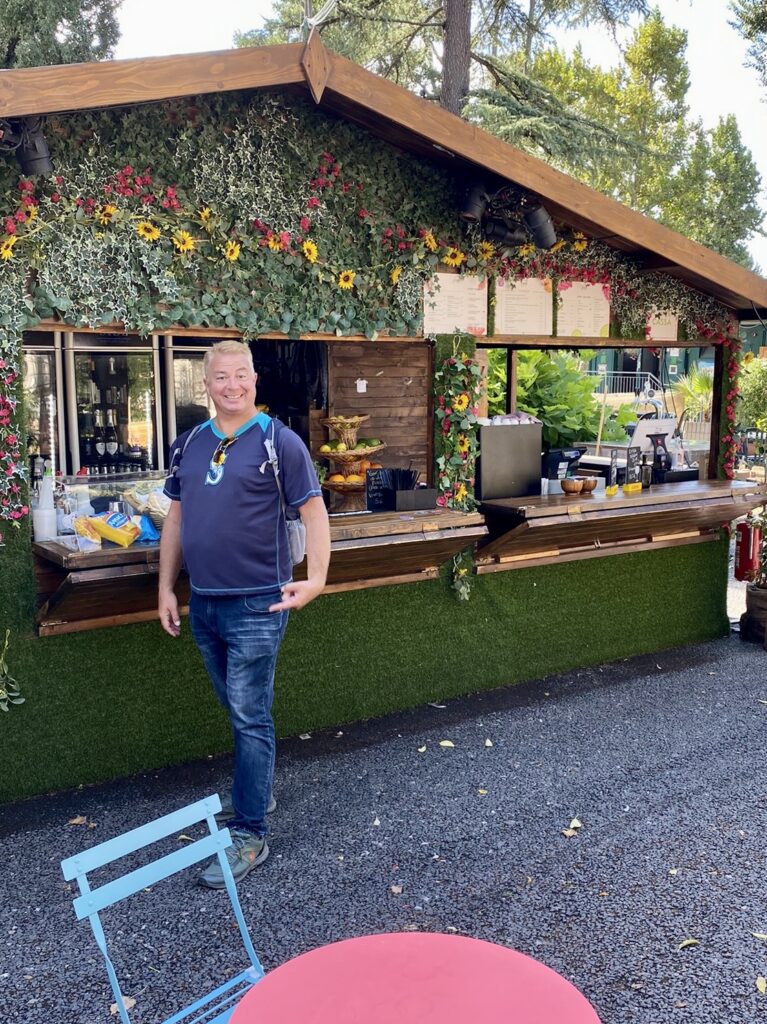
We then continued into the Cascine Park, called the “green lung” of Florence due to its vegetation.
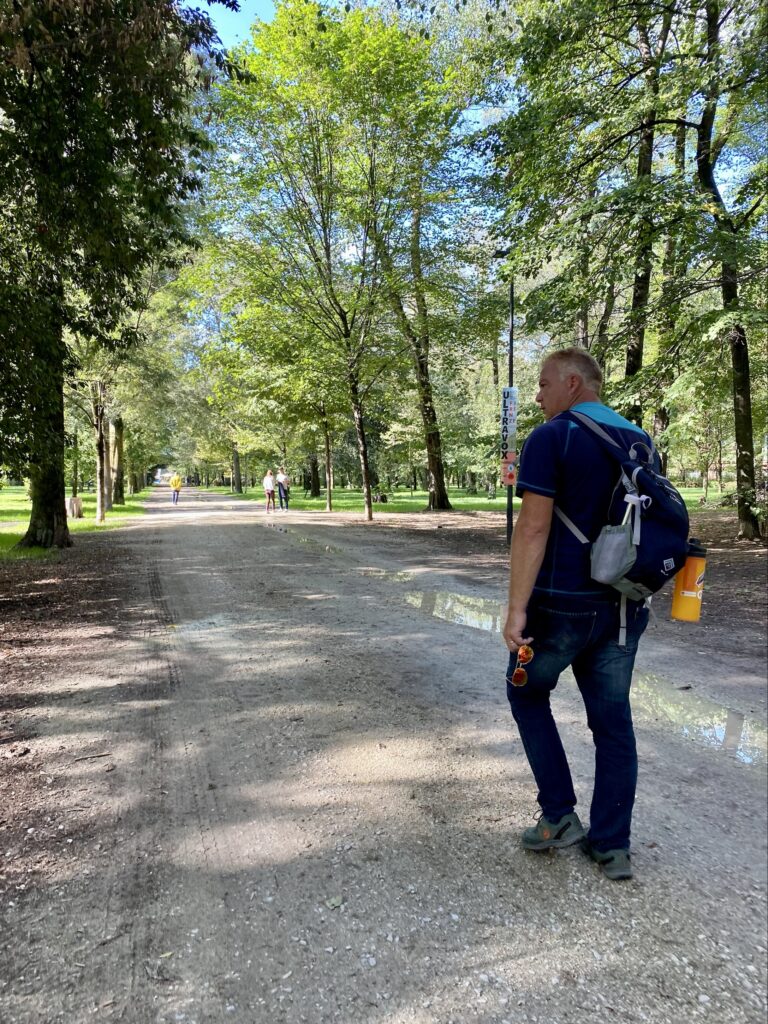
There we planned to attend a steak festival, but by the time we found the festival, they had stopped grilling for the afternoon. We find festivals to be 50/50: sometimes they are outstanding (like the wine festival in Pula, Croatia), and sometimes they seem more like an opportunity for the organizers to get government funds. This festival had advertisements, but nowhere did it state that the grills would be stopping at 3 PM, creating a steak festival without any steaks to eat. More on food below, as we did have some great culinary times in Florence!
A spa day
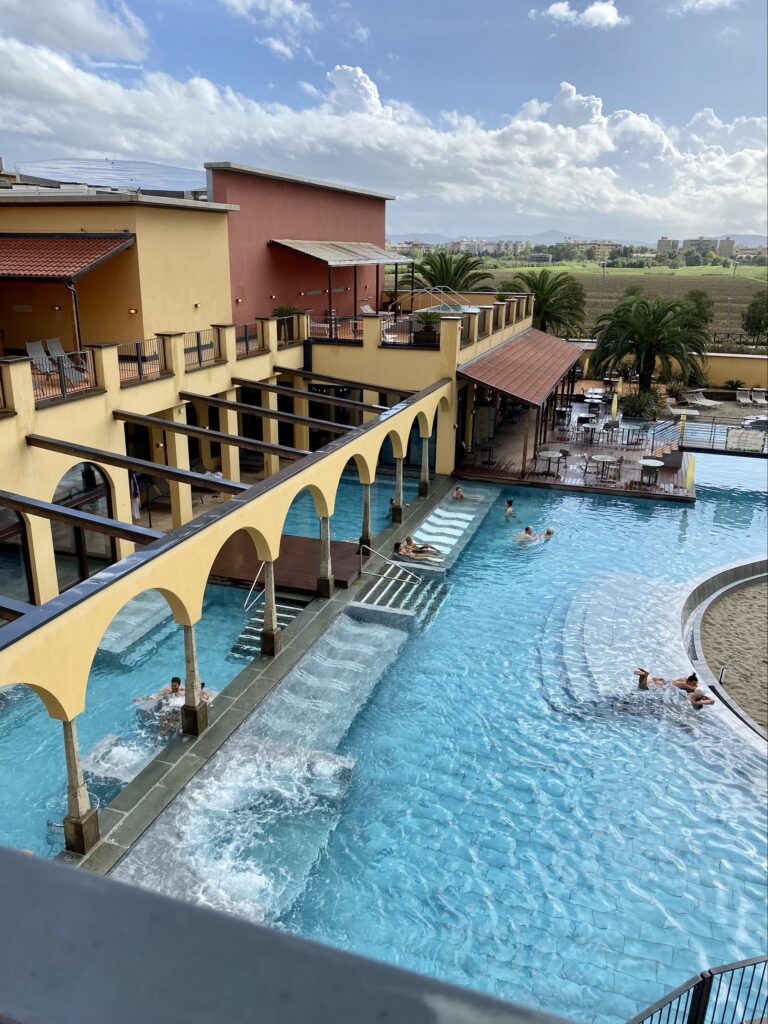
Asmana Wellness World is the largest spa center in Italy. It is huge! There are dozens of steam rooms and saunas indoors, both indoor and outdoor pools, and a small sand beach by the pool. Striking out on places to sunbathe in Florence, we went fancy and paid a weekday discount rate to enjoy Asmana. We liked it so much that we went back about a week later!
Food
The food in Italy is simply amazing – fresh, delicious, and expertly prepared.
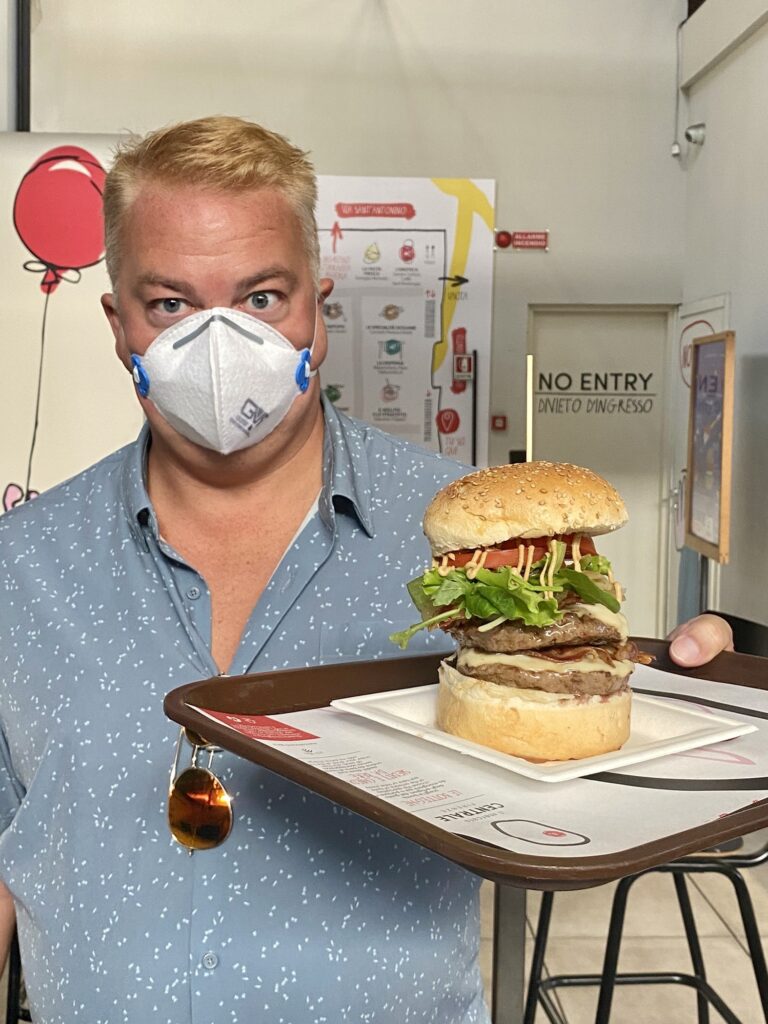
Culinarily, Florence is perhaps best known for a particular steak, the Bistecca alla Fiorentina. This is a thick porterhouse, at least two-fingers thick so that it can stand on-end. It is simply grilled to a char, salted, and served rare, sometimes with a garnish of olive oil or rosemary. We ate this multiple times. According to Corey, “A good porterhouse should have a sizable filet component, especially since a large portion of the weight is going to be in the T-bone.”
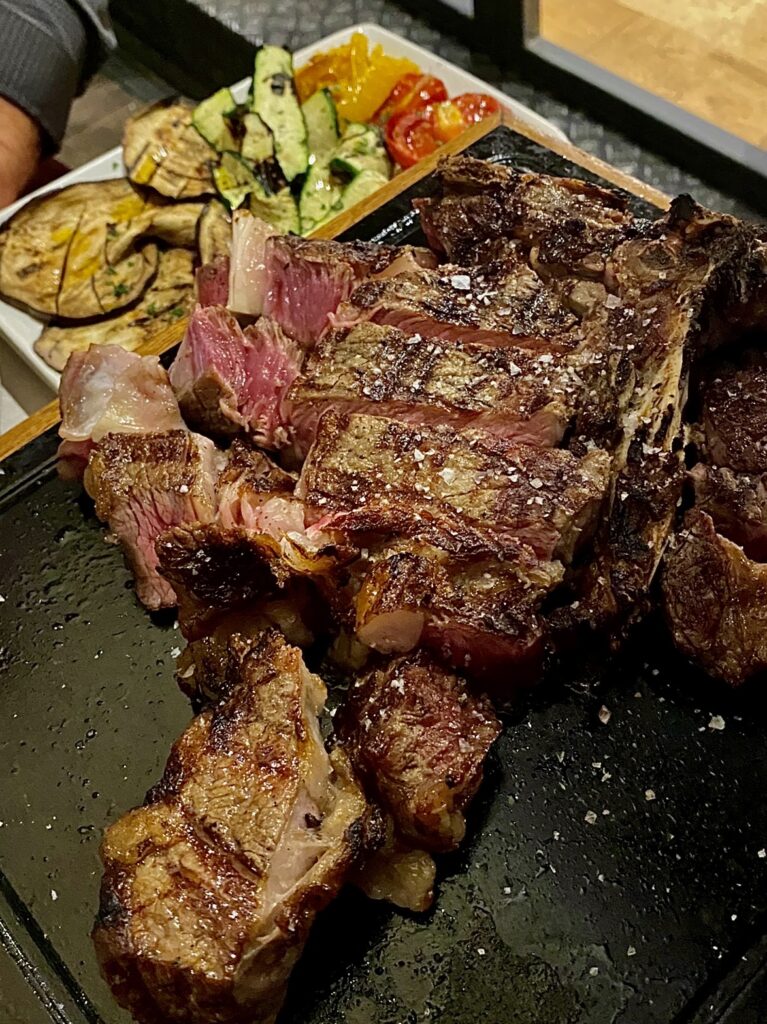
Some Florentine steaks were cut lower on the loin and thus were lacking a significant filet. A bone-in strip is still a good steak, but should be priced appropriately!
Steaks are priced by the hectogram, or 1-tenth of a kilogram. A usual order seemed to be about 1.2 kilograms, or about a 42 ounce steak to share. A kilogram was priced anywhere from $40 to $100 depending on the type of beef and the fanciness of the establishment. Here’s a reel of our date night at a popular Fiorentine steak place.
A less-expensive option is the costata steak, aka Corey’s favorite, the ribeye! This gets second-billing in Florence since it is not the Florentine steak, but it is cooked in the same fashion and comes from the same high-quality cows.
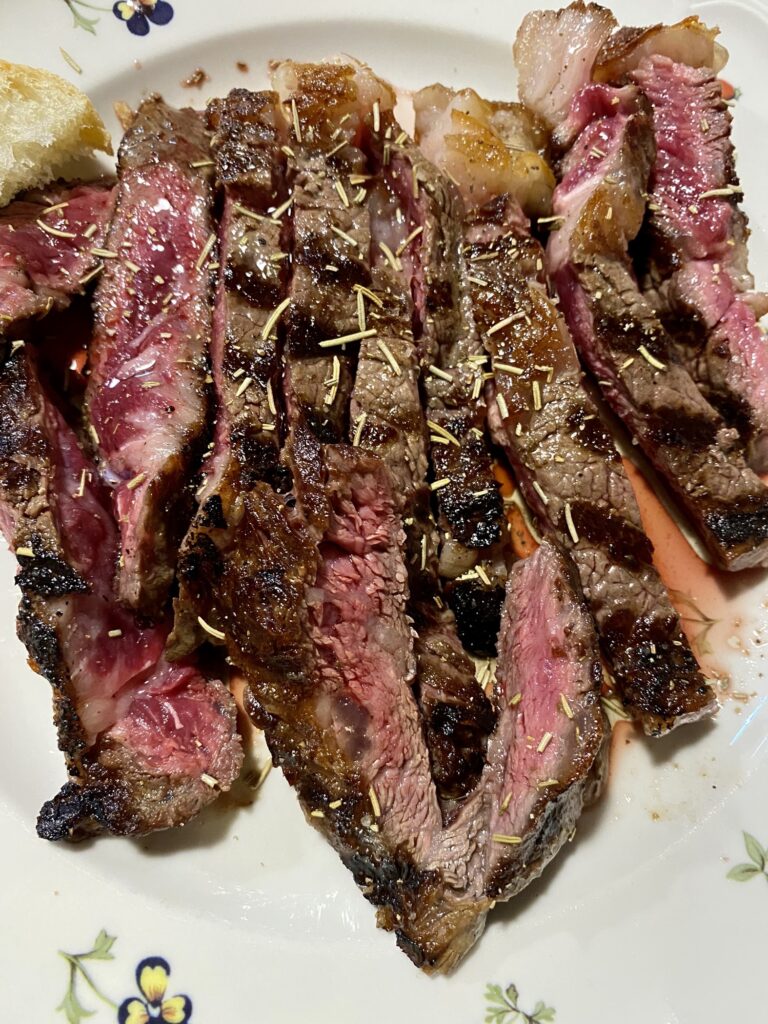
And even less-expensive is the tagliata (cut) steak, which is typically a large chunk of sirloin, sliced in the kitchen. Rare sirloin is delicious!
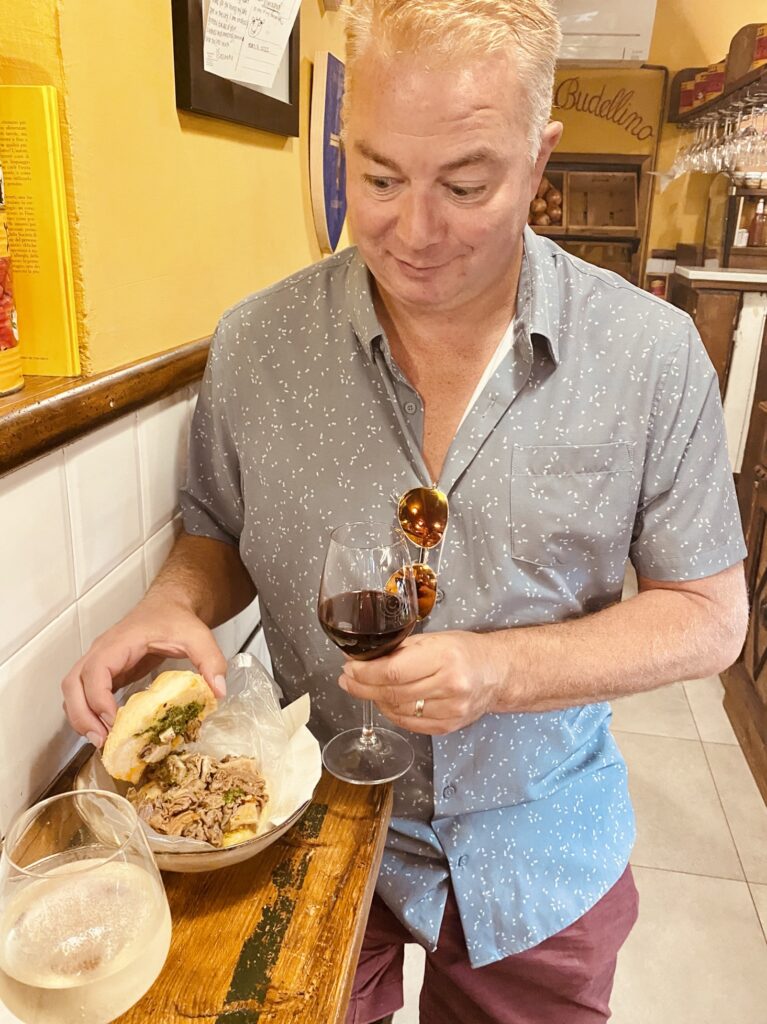
Corey tried lampredotto, a notable Florentine dish made from stomach tripe, and typically served on a crusty roll with sauce.
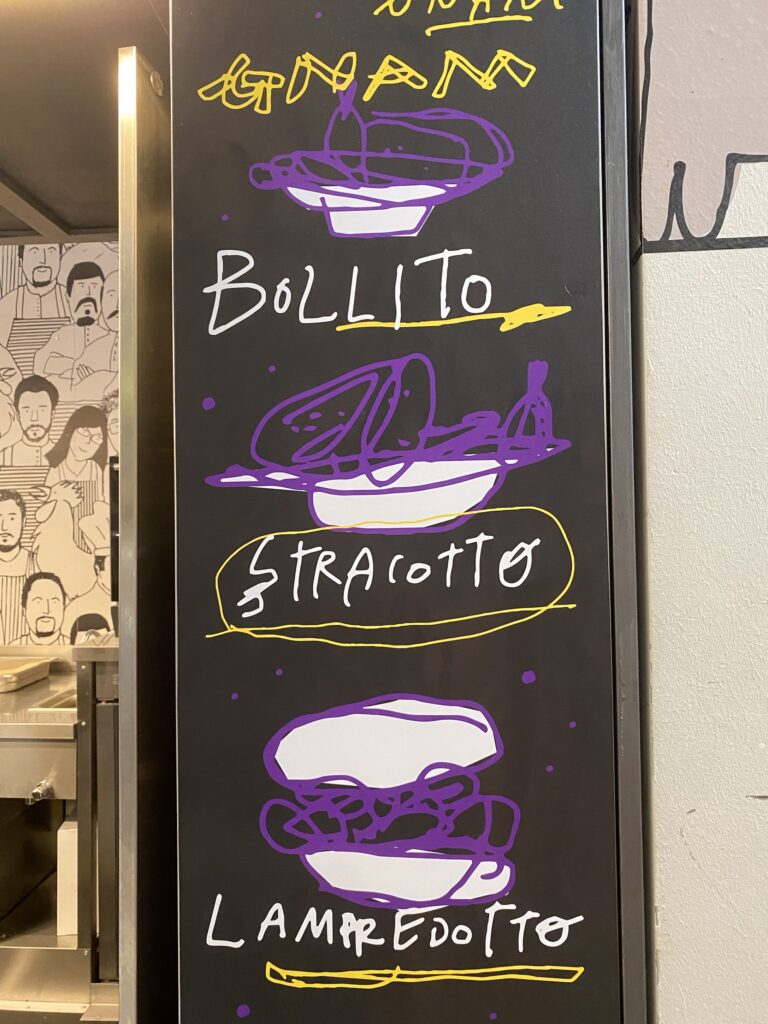
We also had many amazing pasta and local dishes. Food did not disappoint in Florence at all!
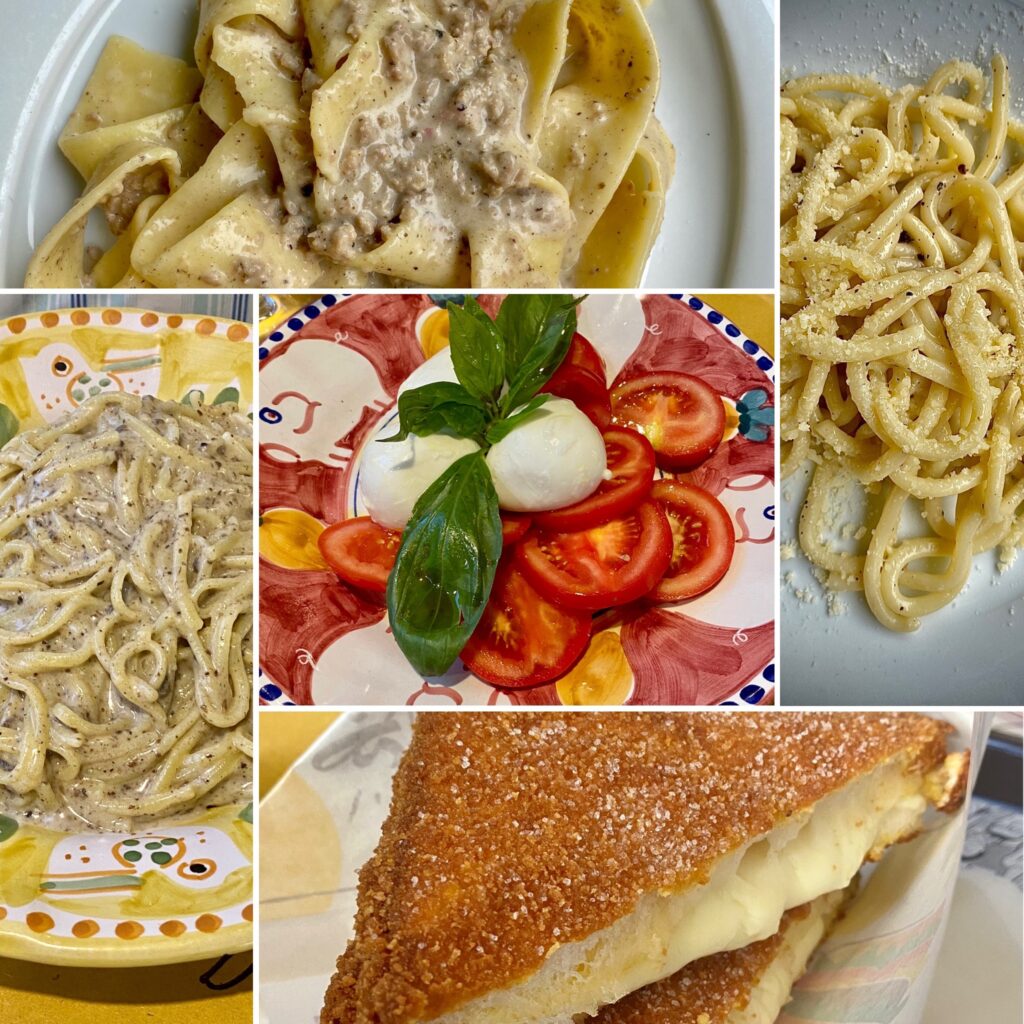
We discovered a small family restaurant near our rental unit that served up great dishes at an affordable place. They had about five tables and the menu was handwritten on the back of a paper. We dined there almost three nights in a row. It was a culinary highlight for me!
We enjoyed many sandwiches throughout our two weeks in Florence, especially from All’Antico Vinaio.
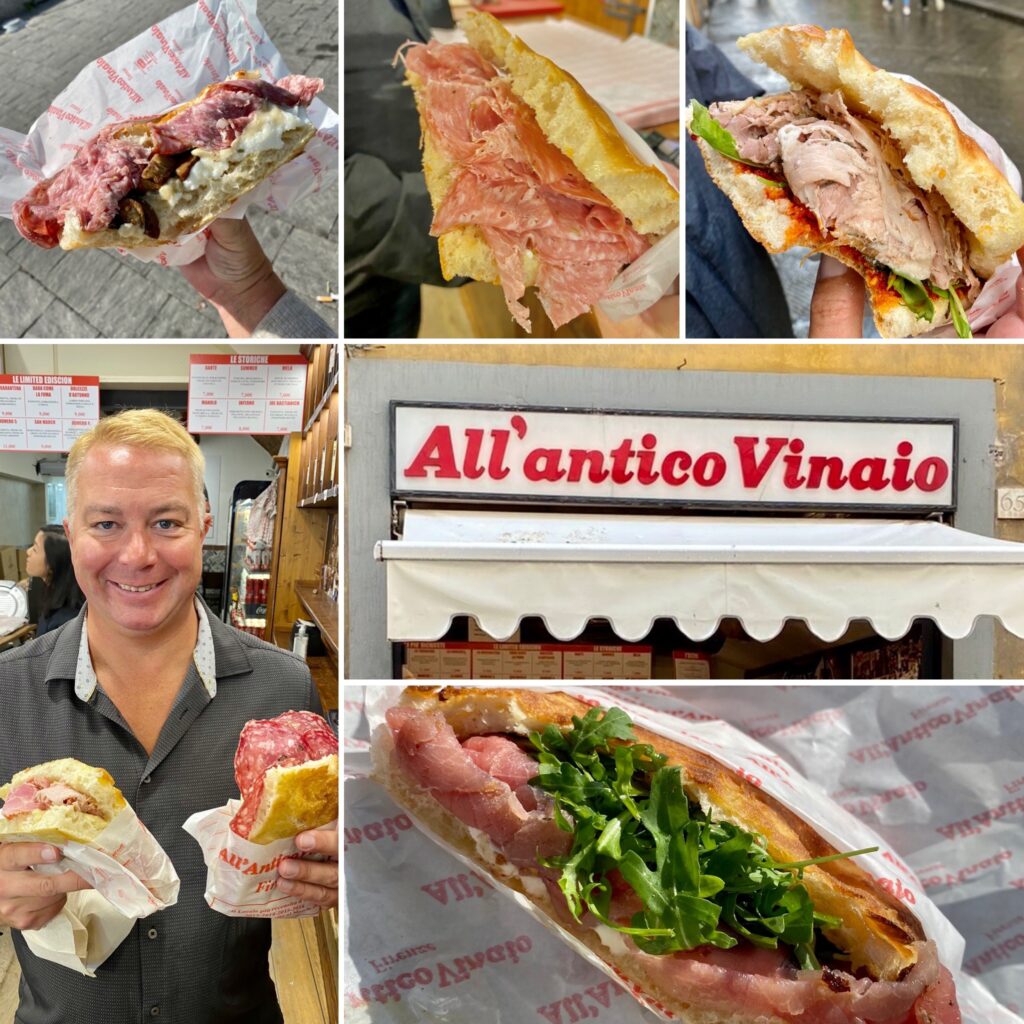
In fact, we built in time to grab sandwiches before boarding the train when we left Florence. It was a delicious farewell to a city that we had mixed feelings about. We loved the history and art, but the crowds and higher prices were a bit of a turnoff for us. There are so many wonderful places to explore in Italy so we left to find “our scene”.
